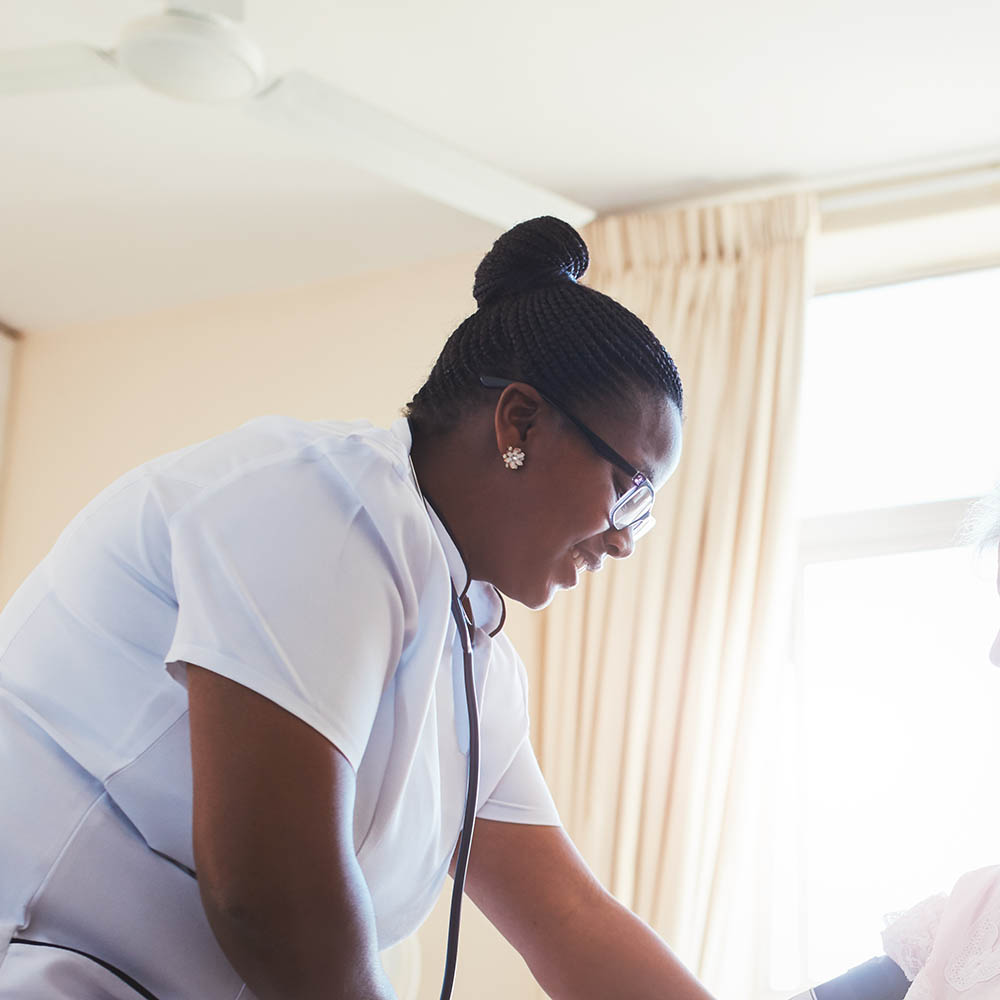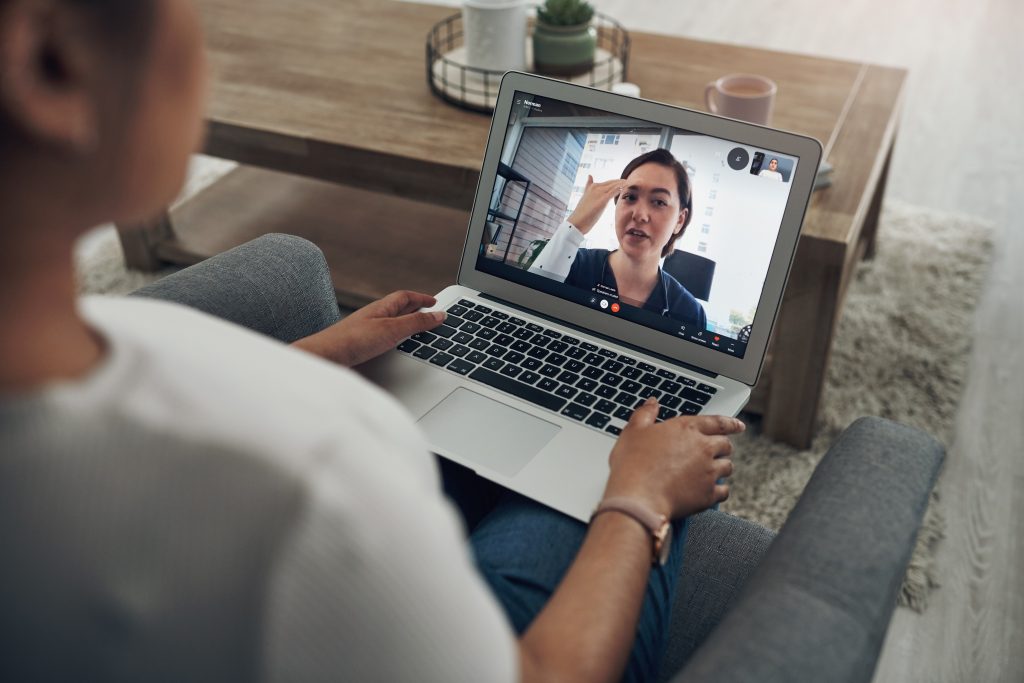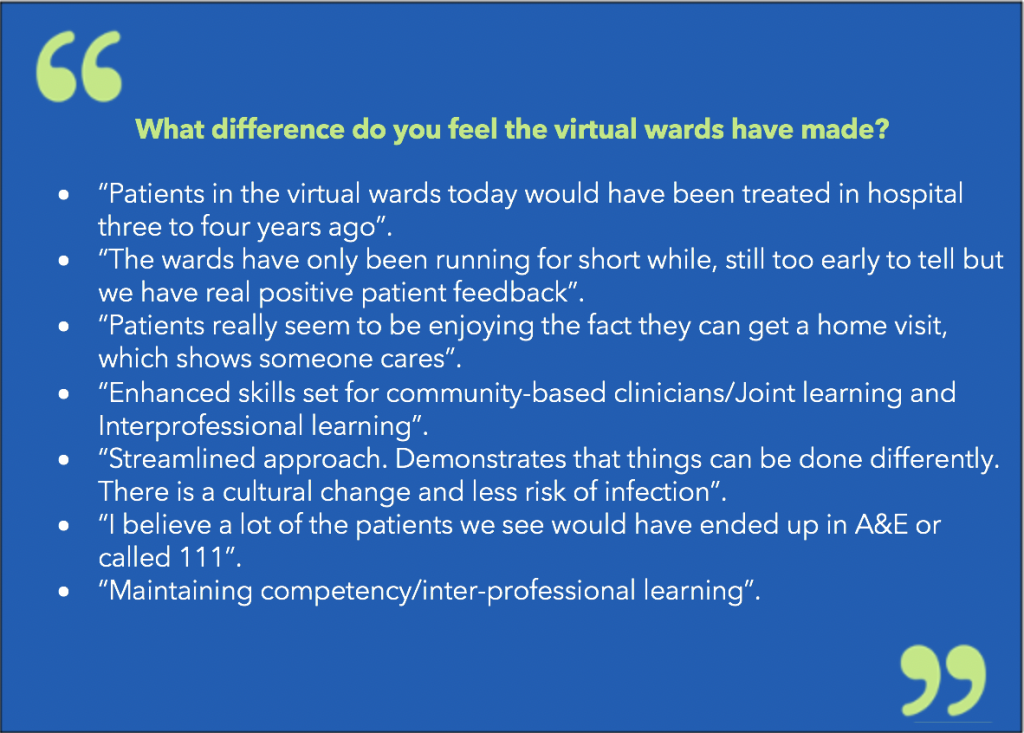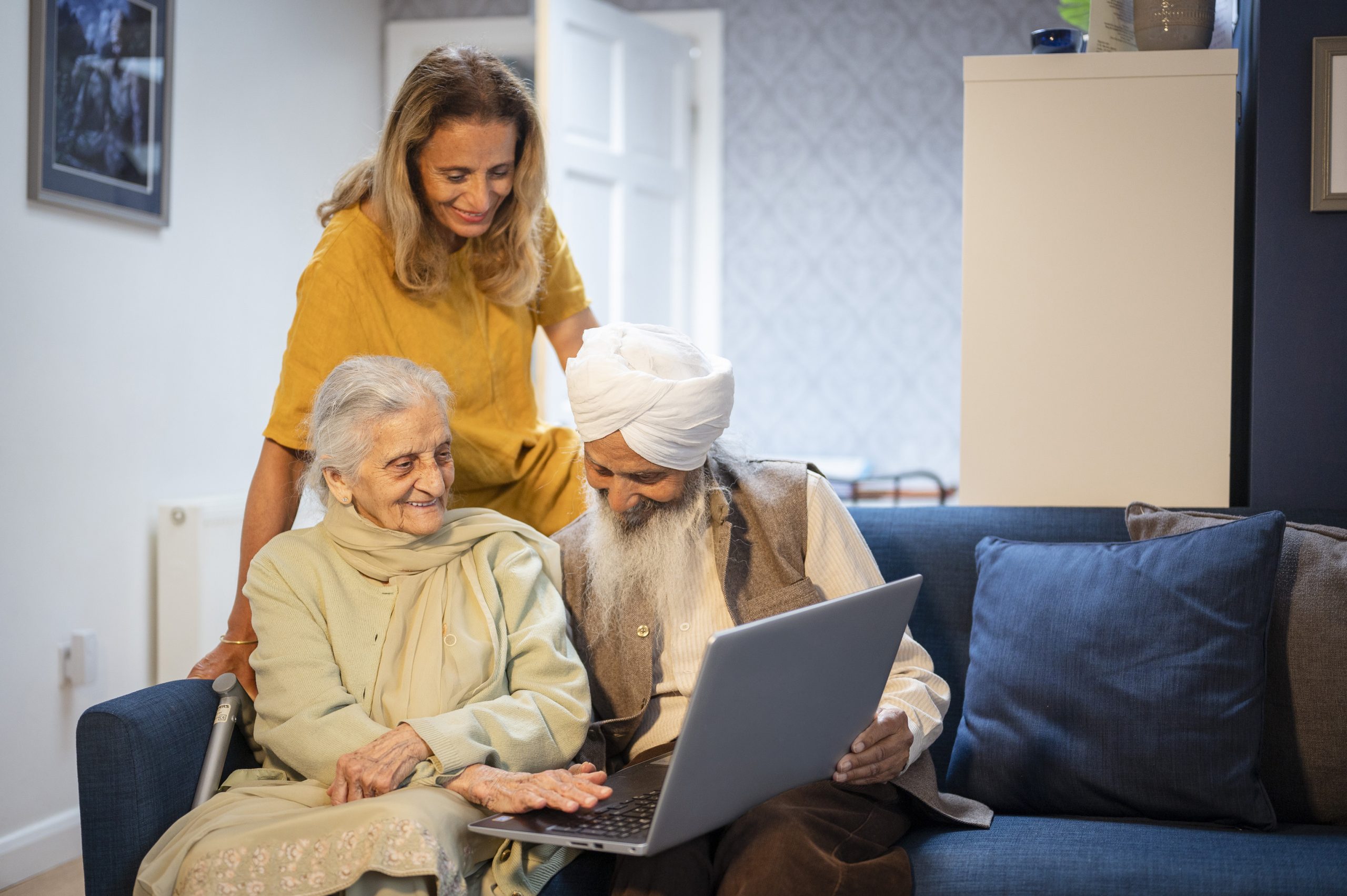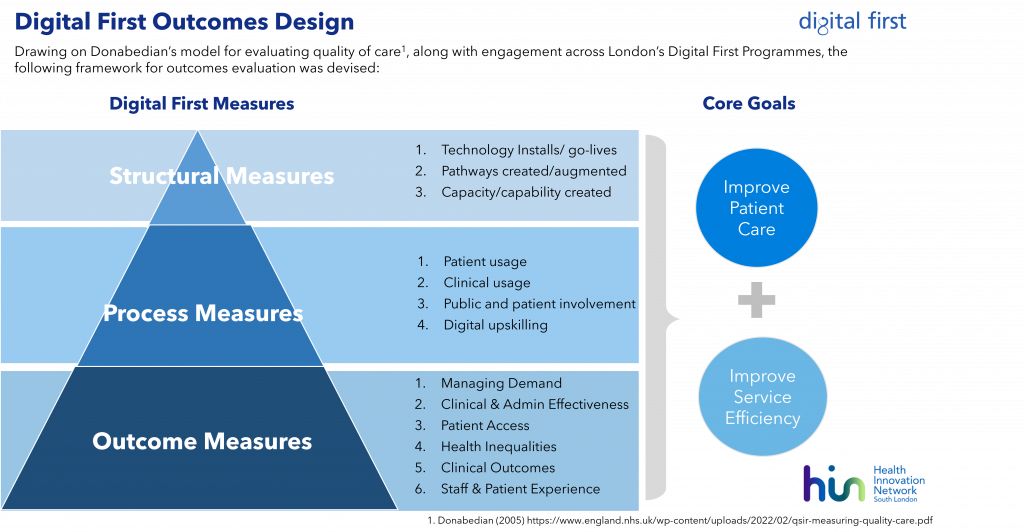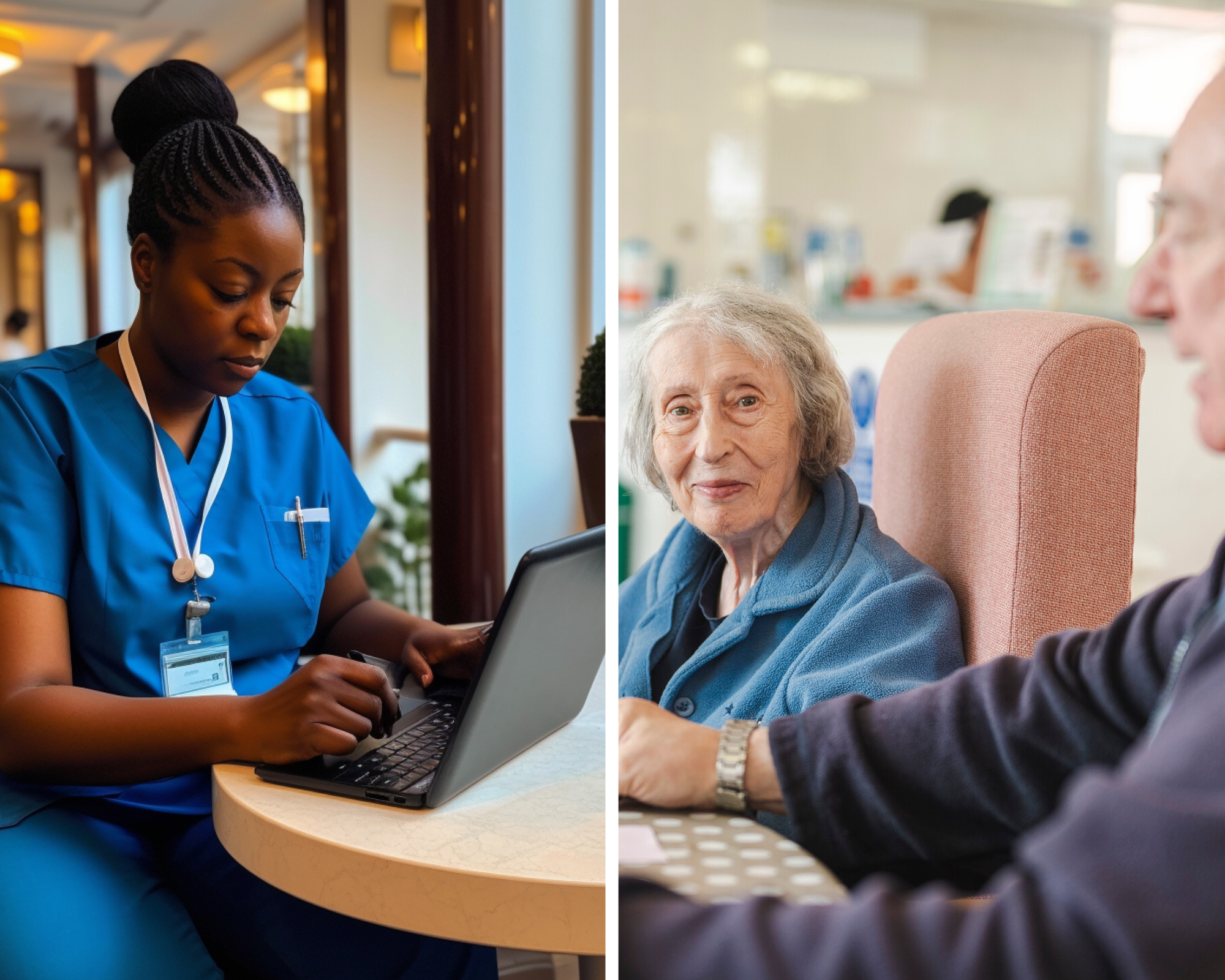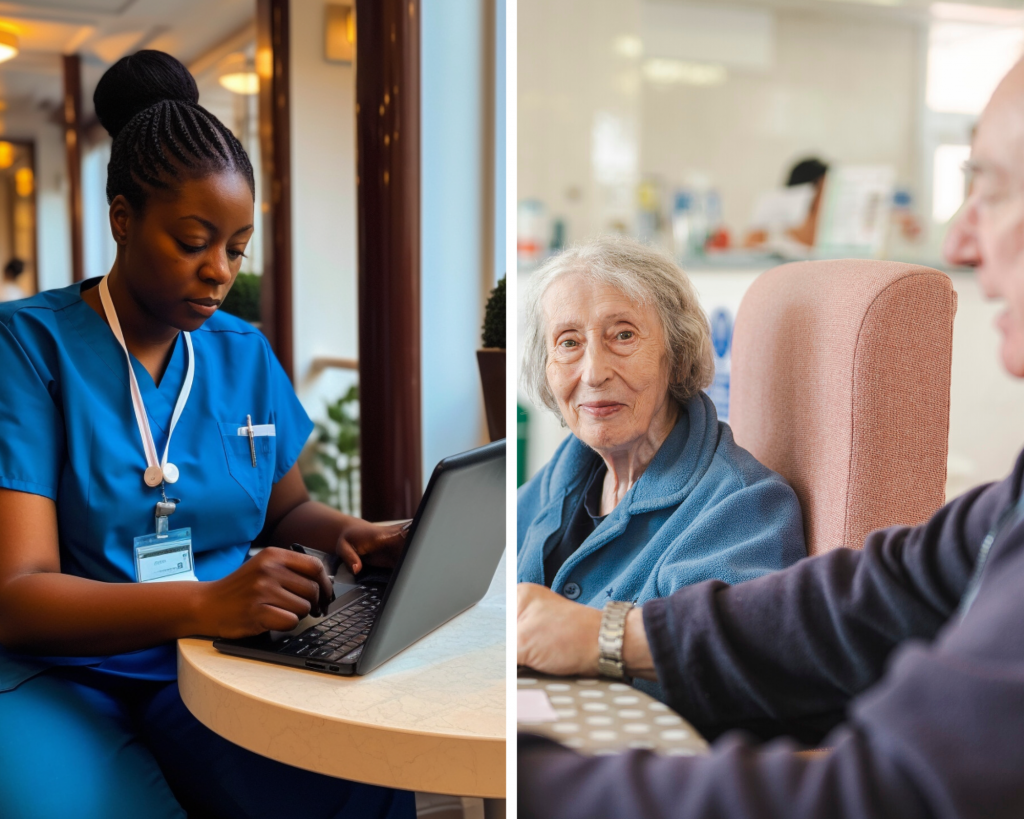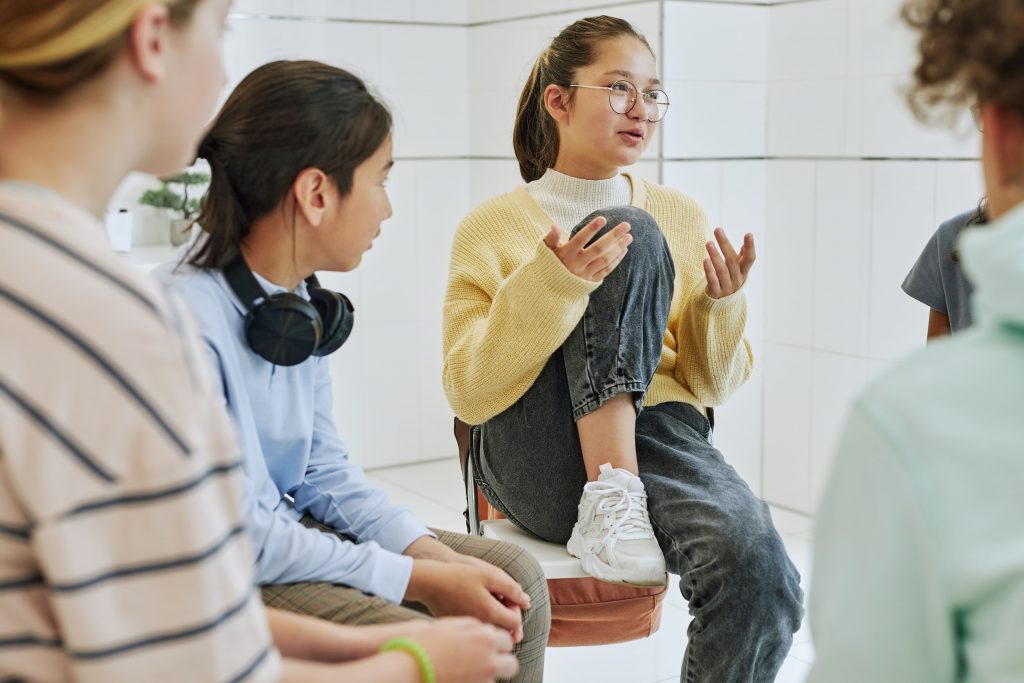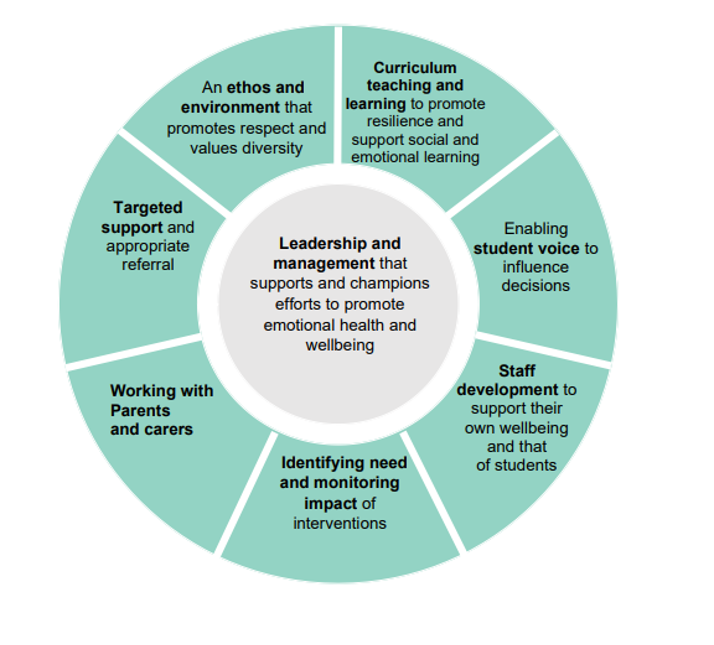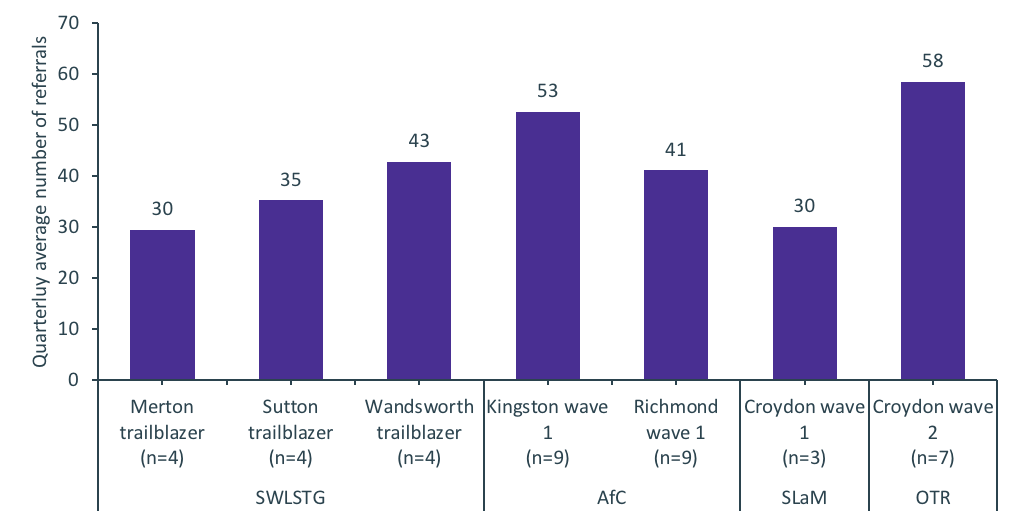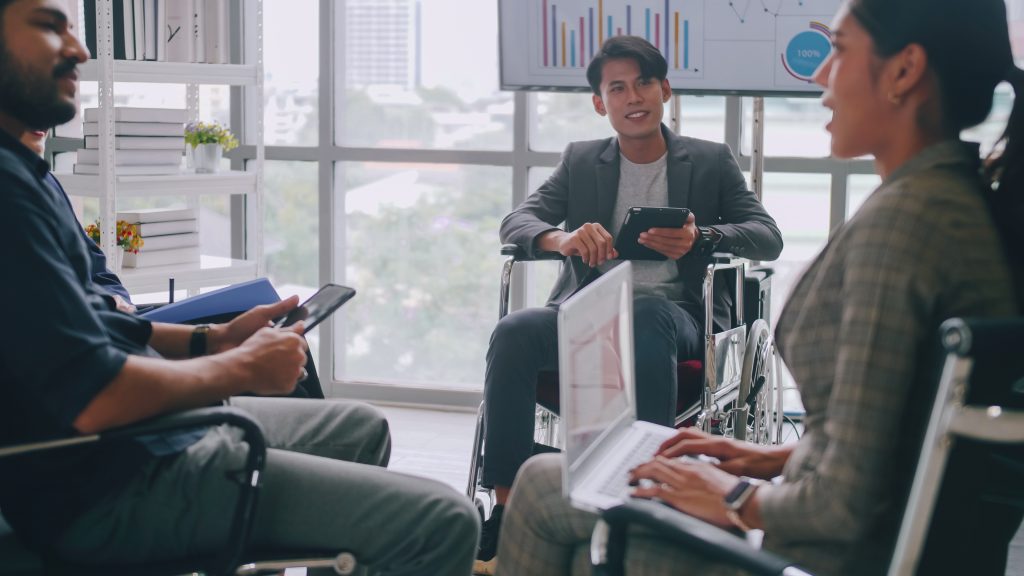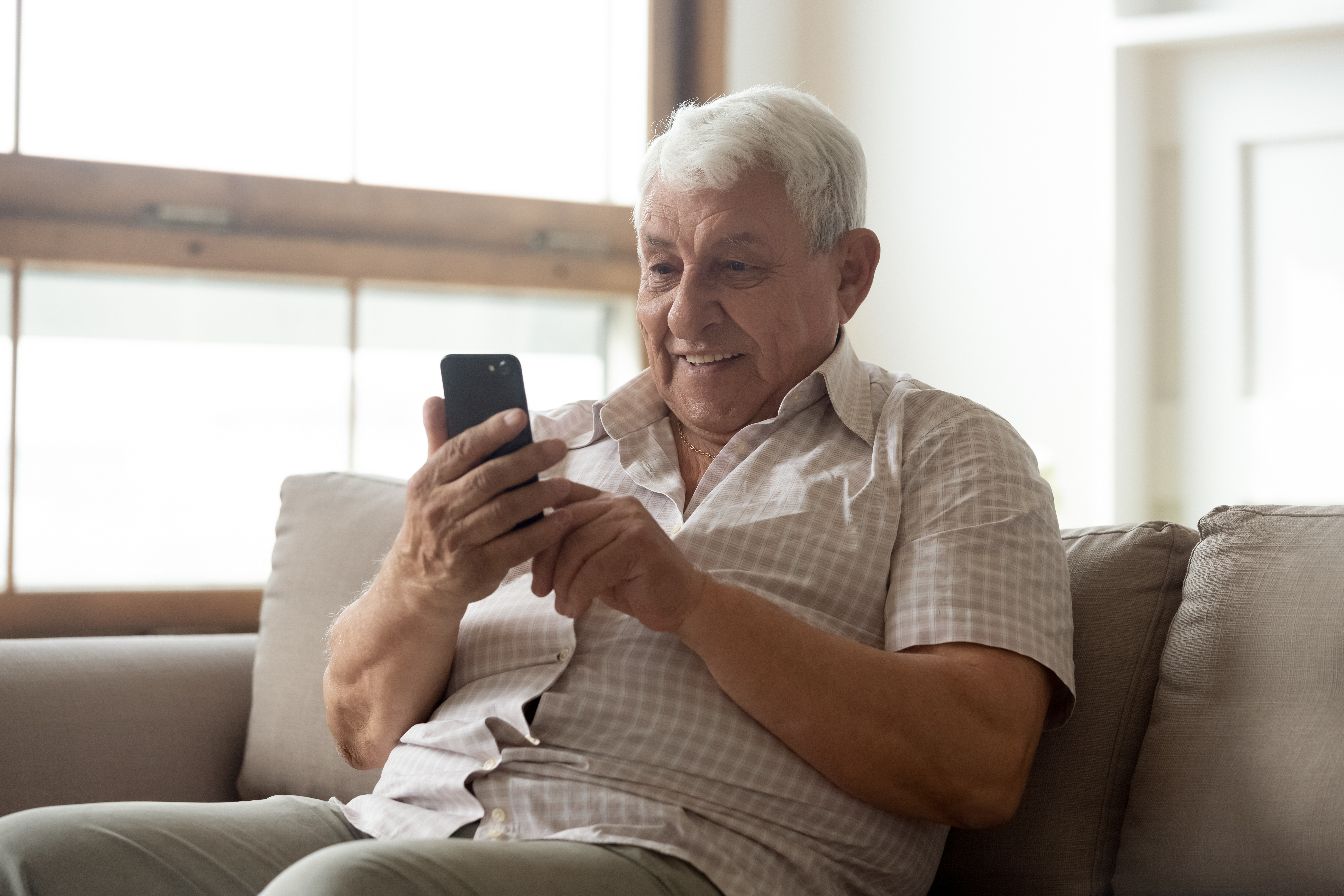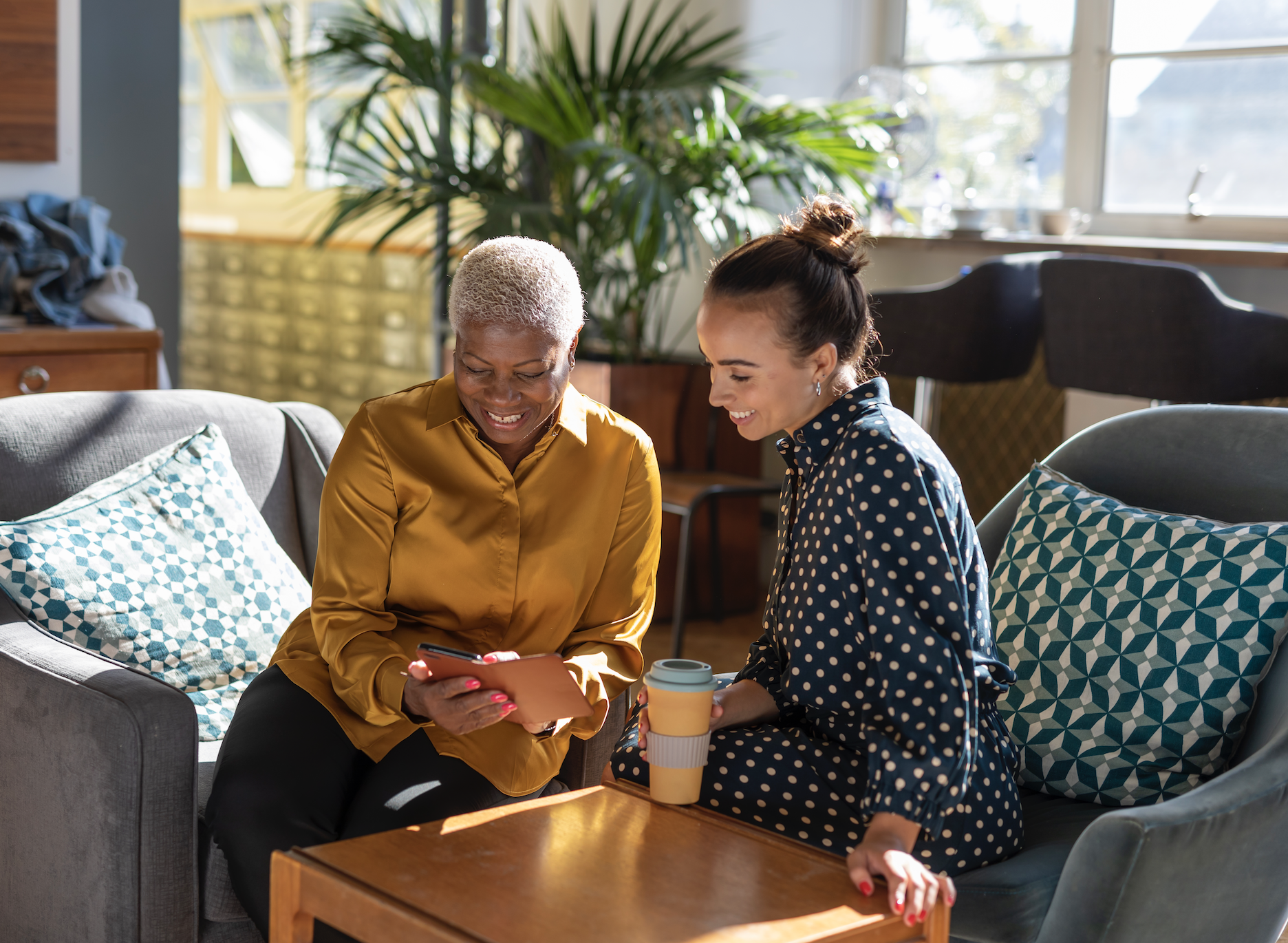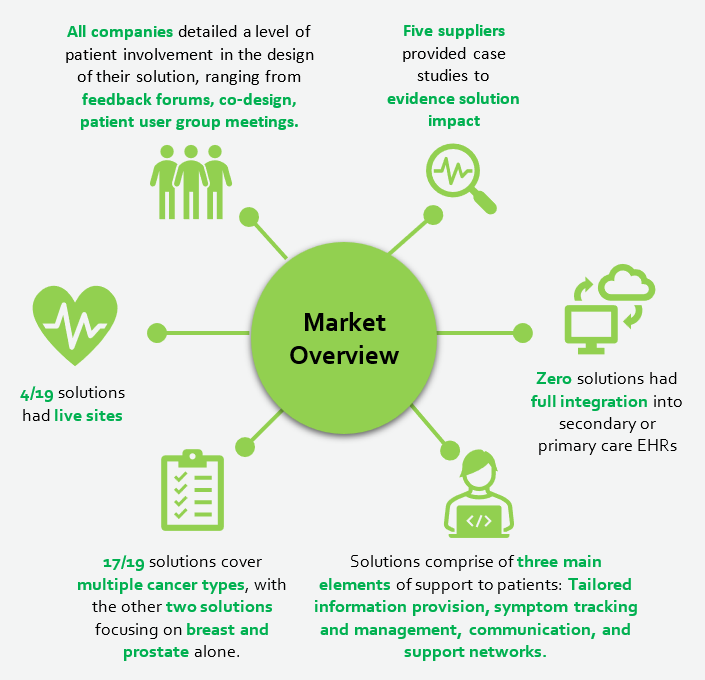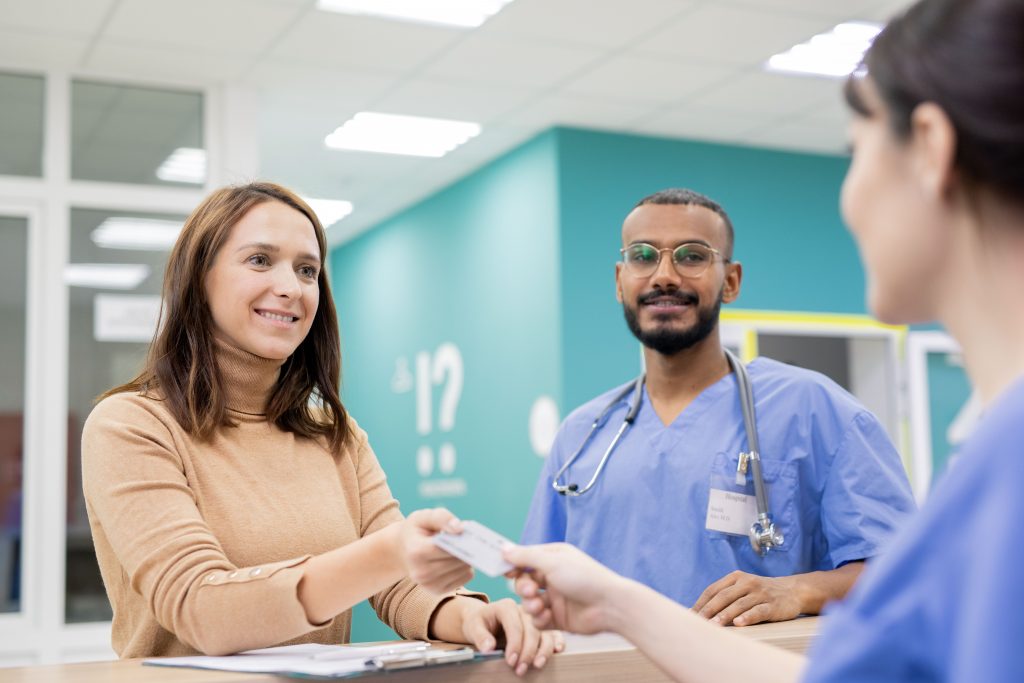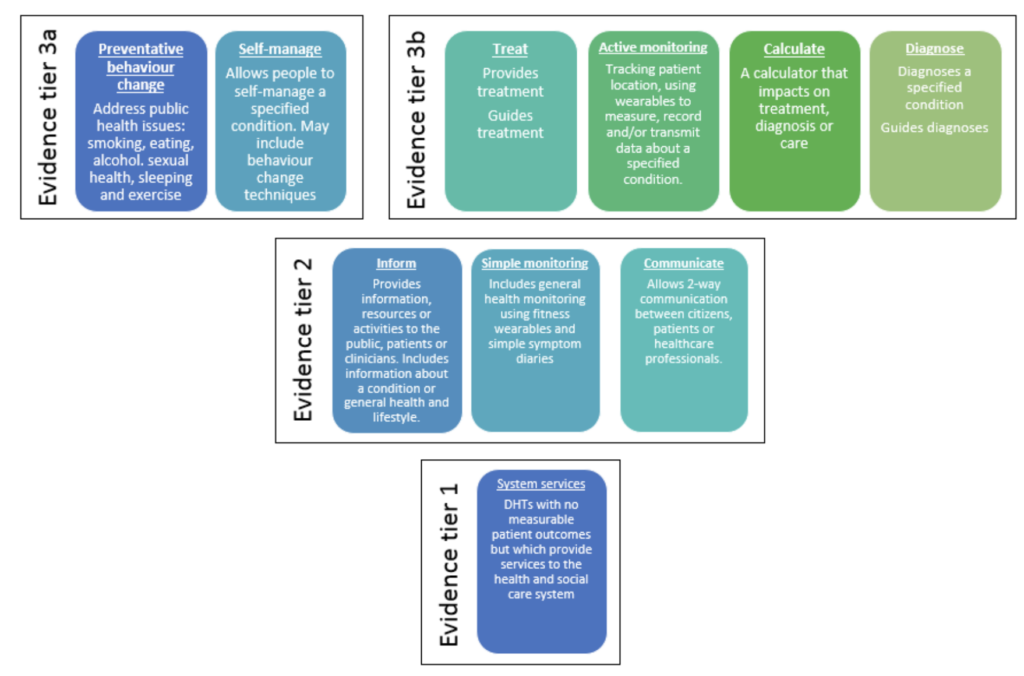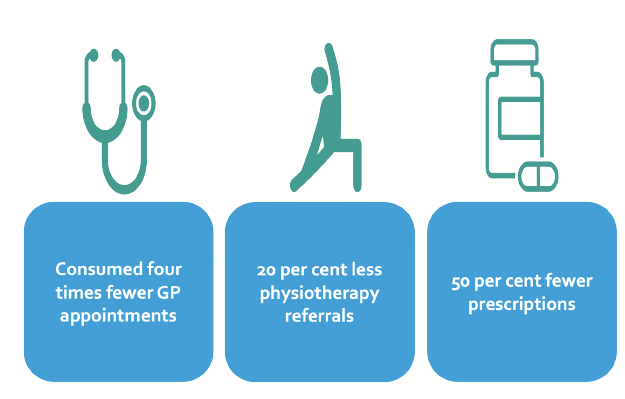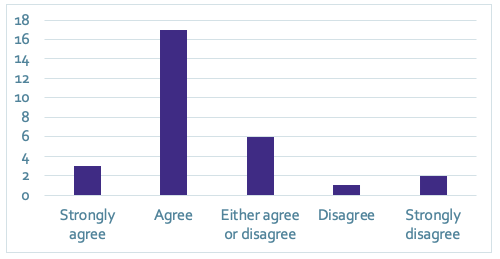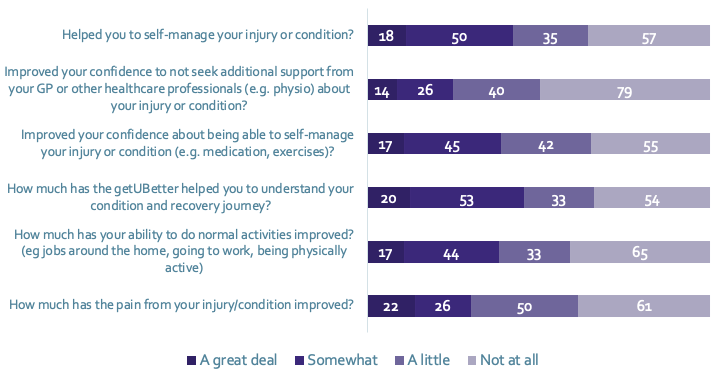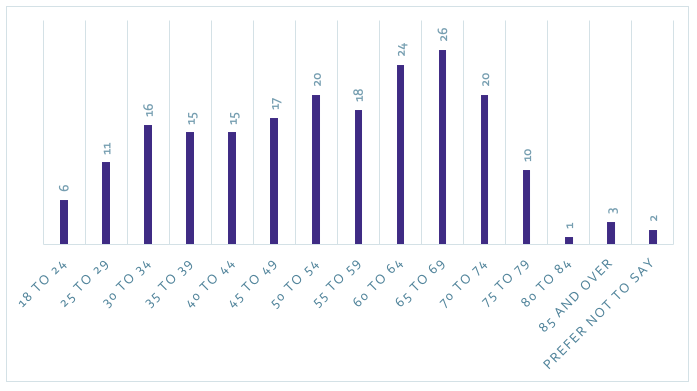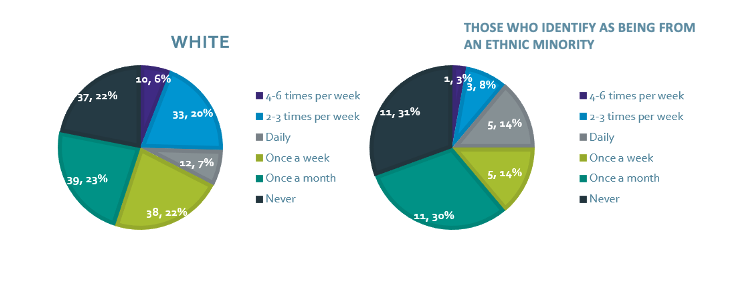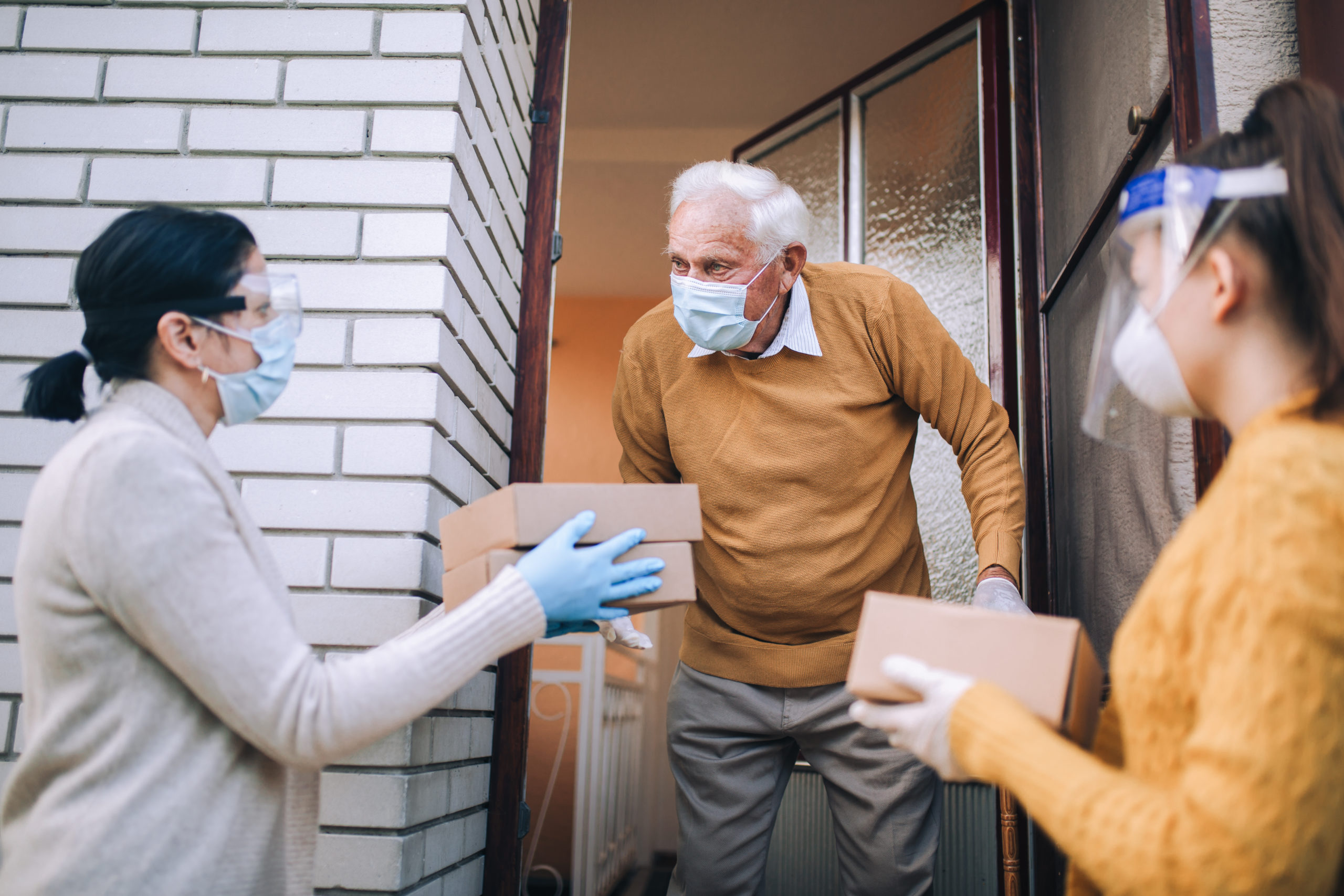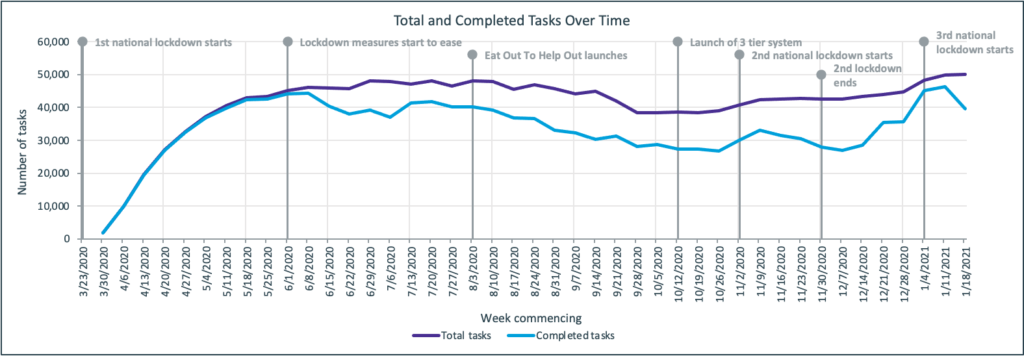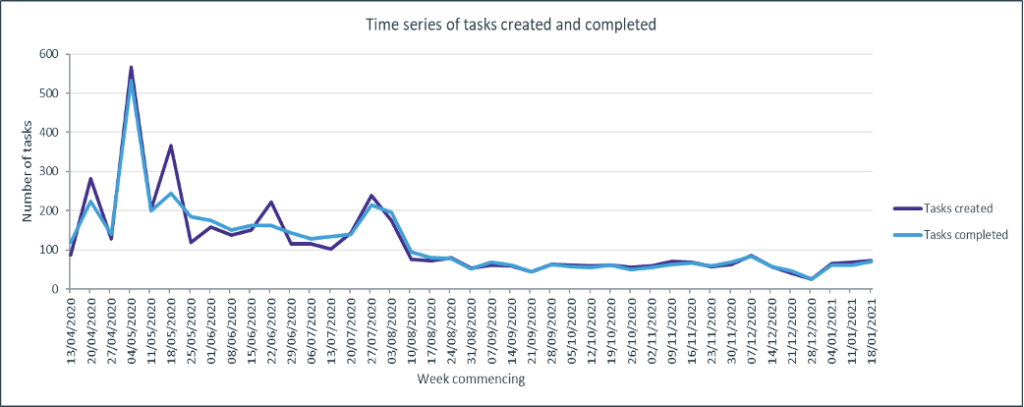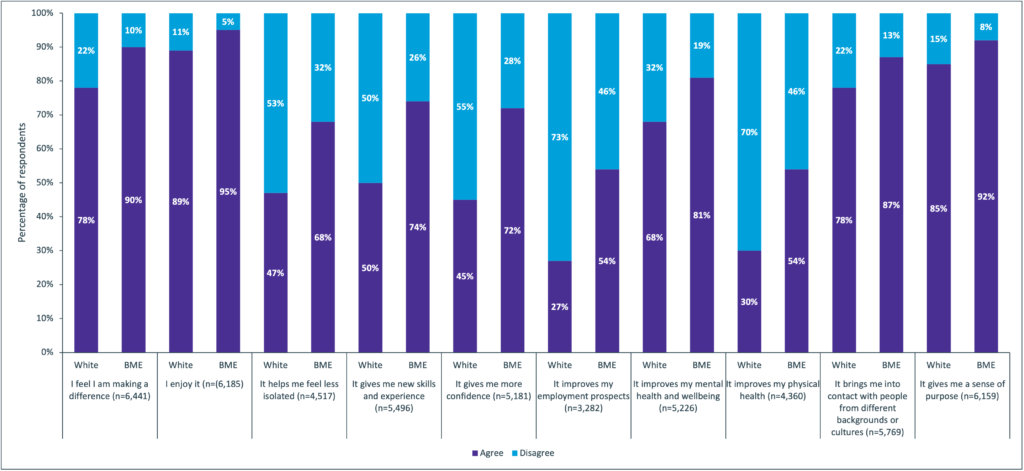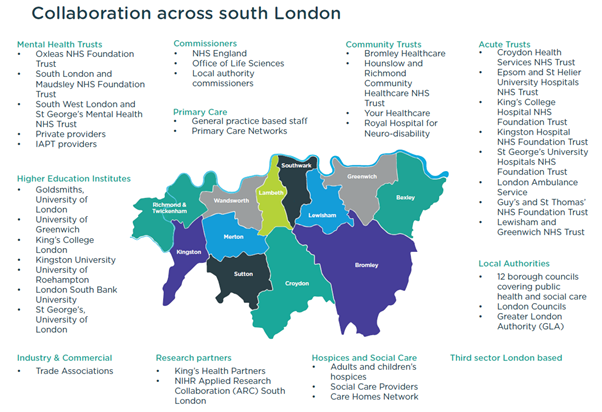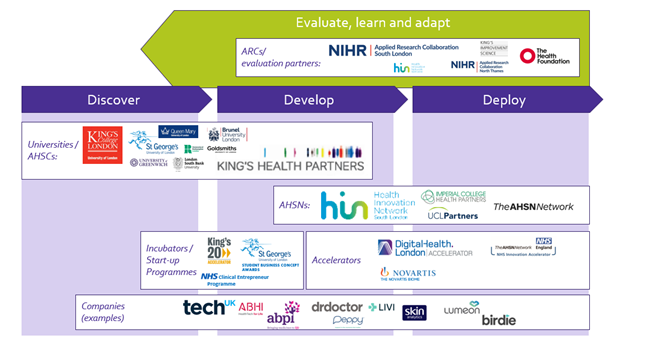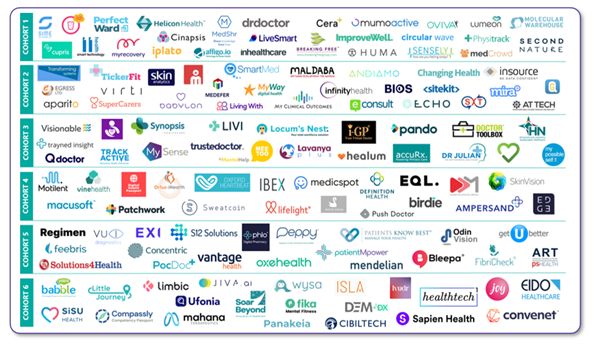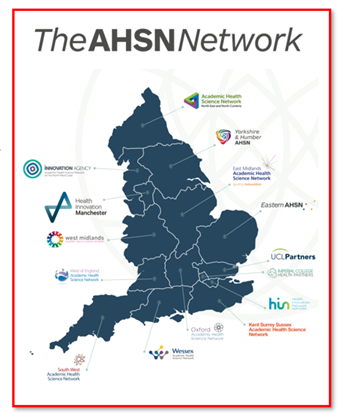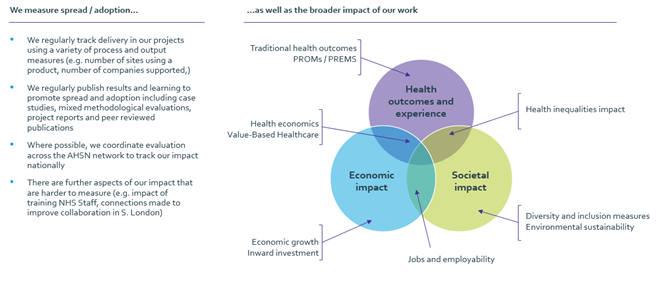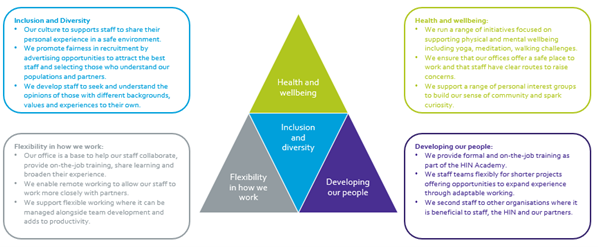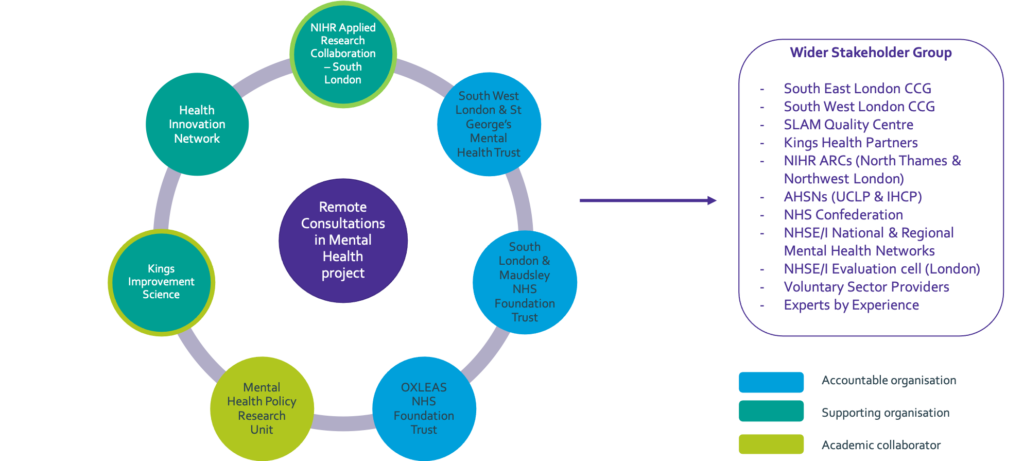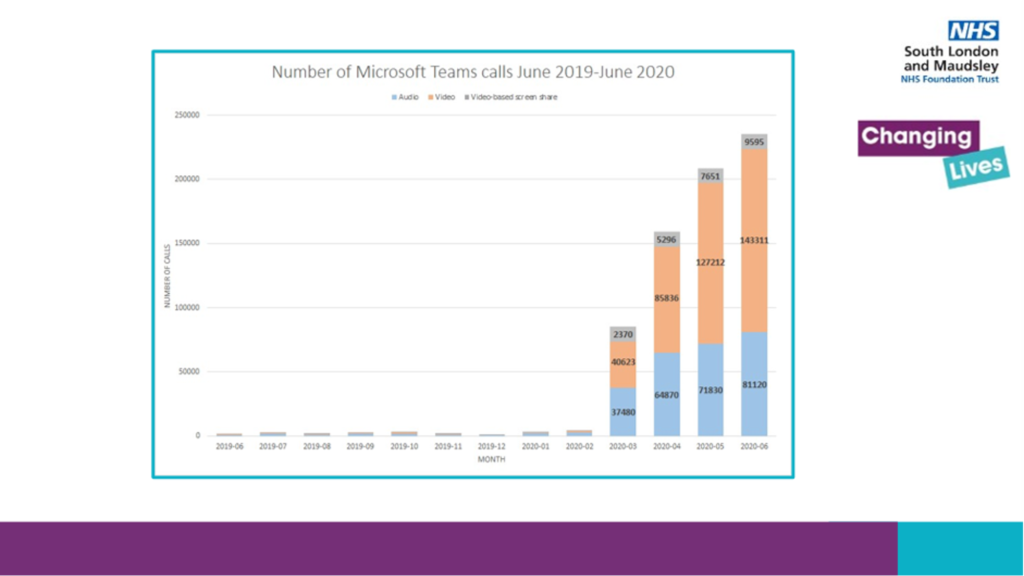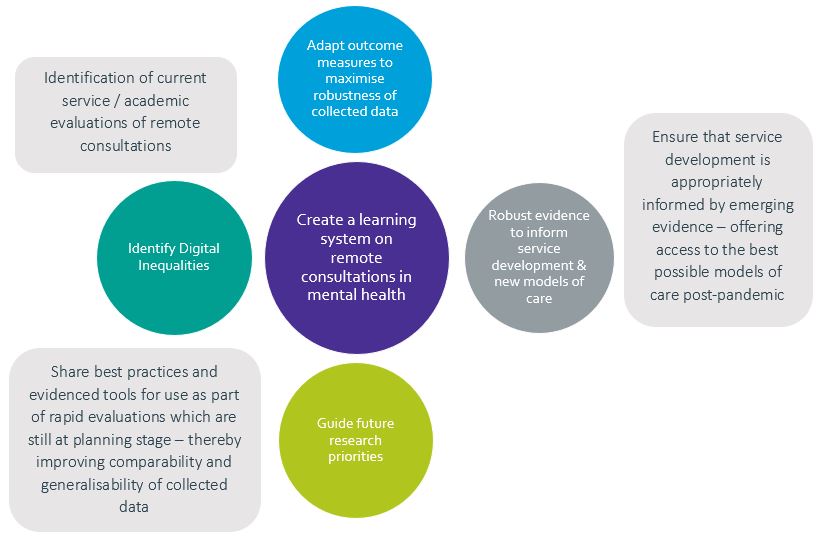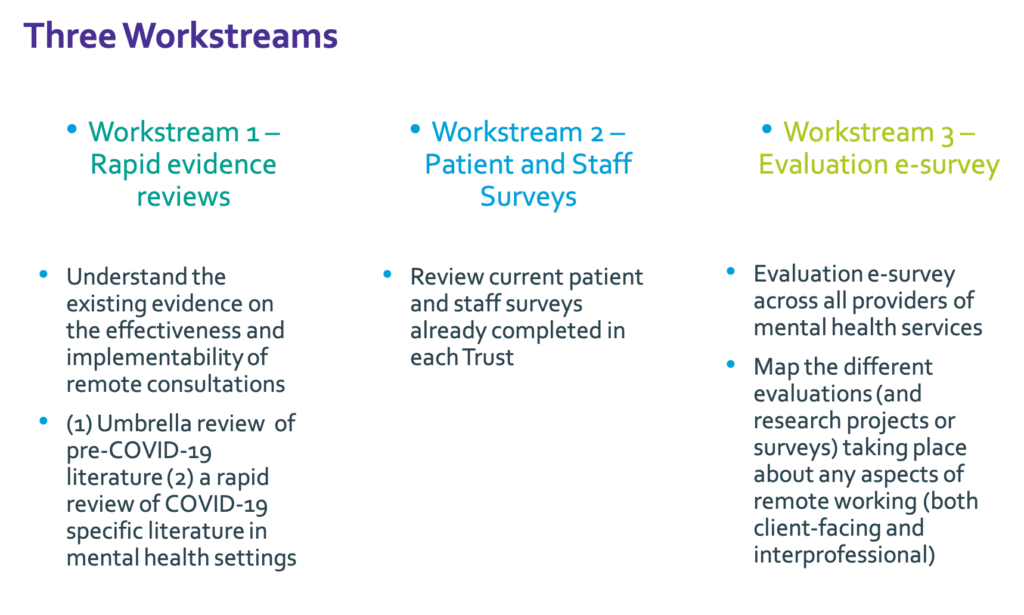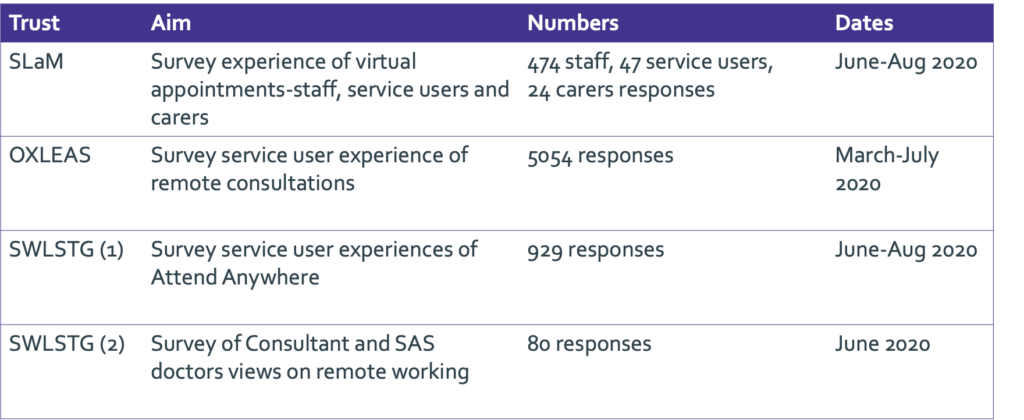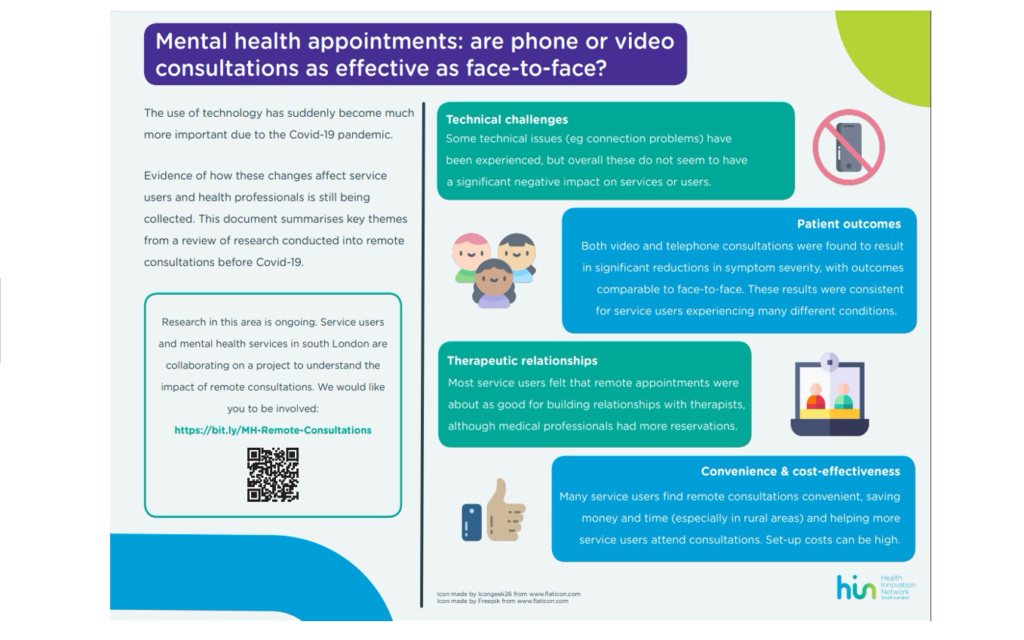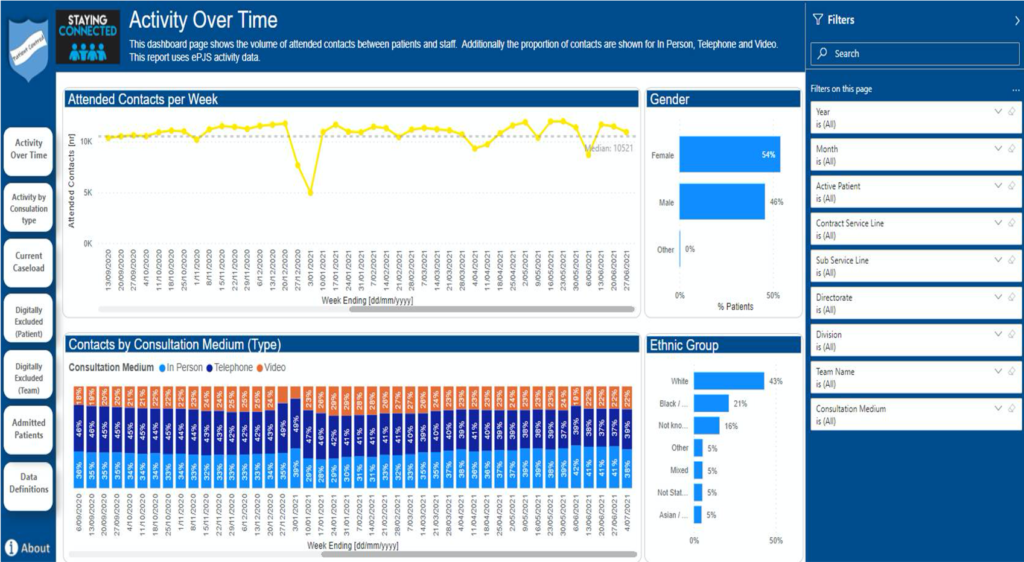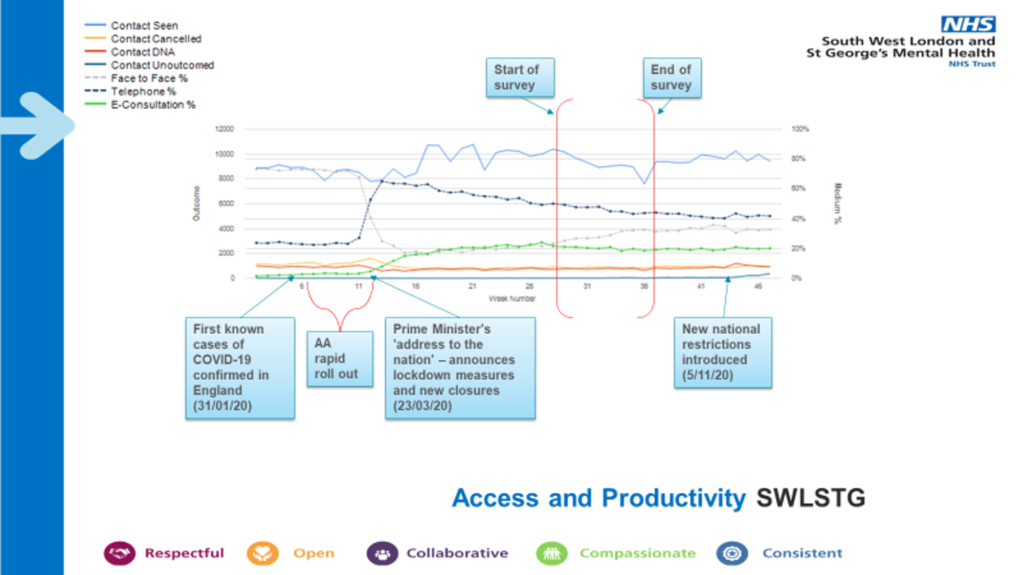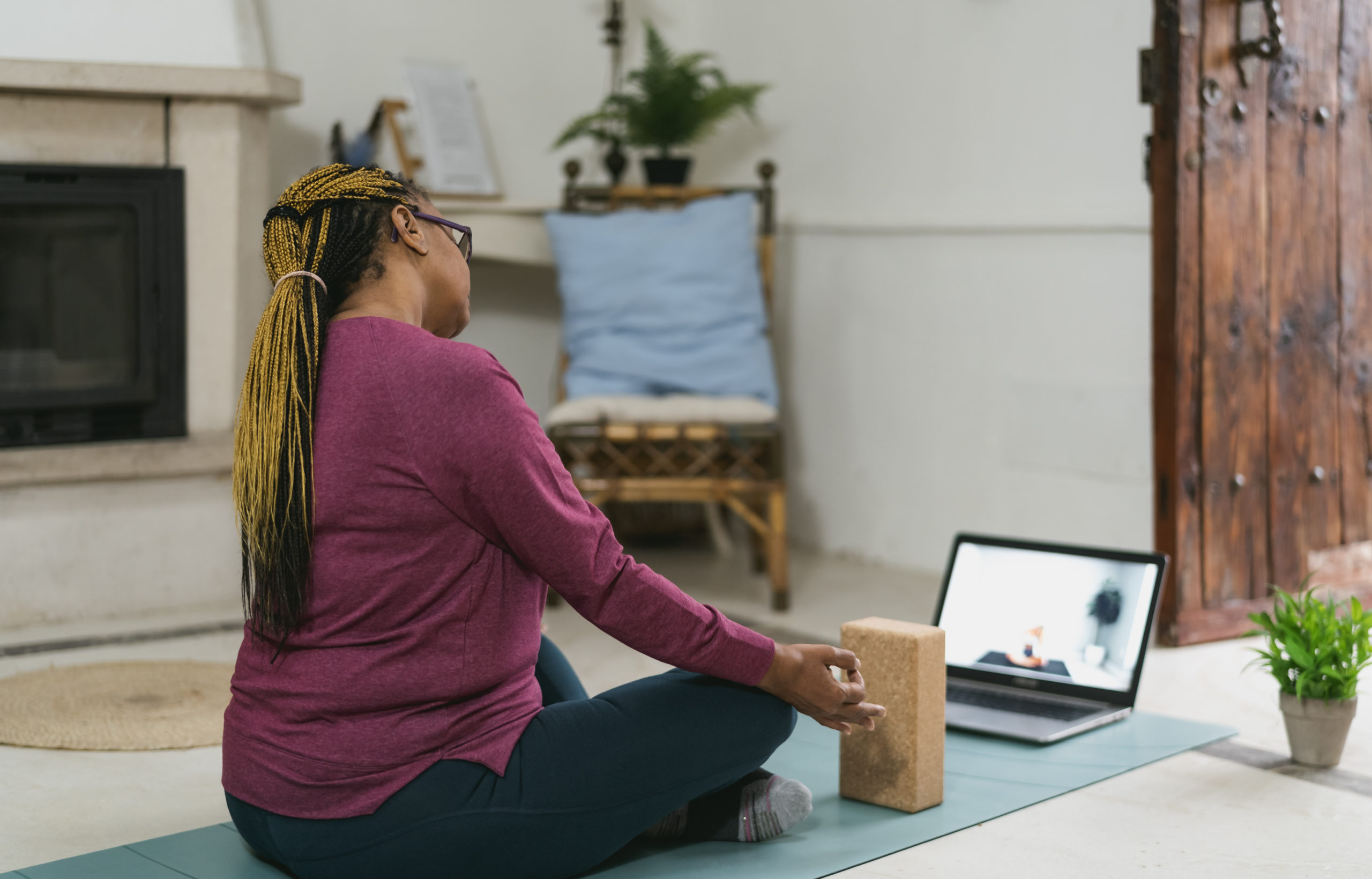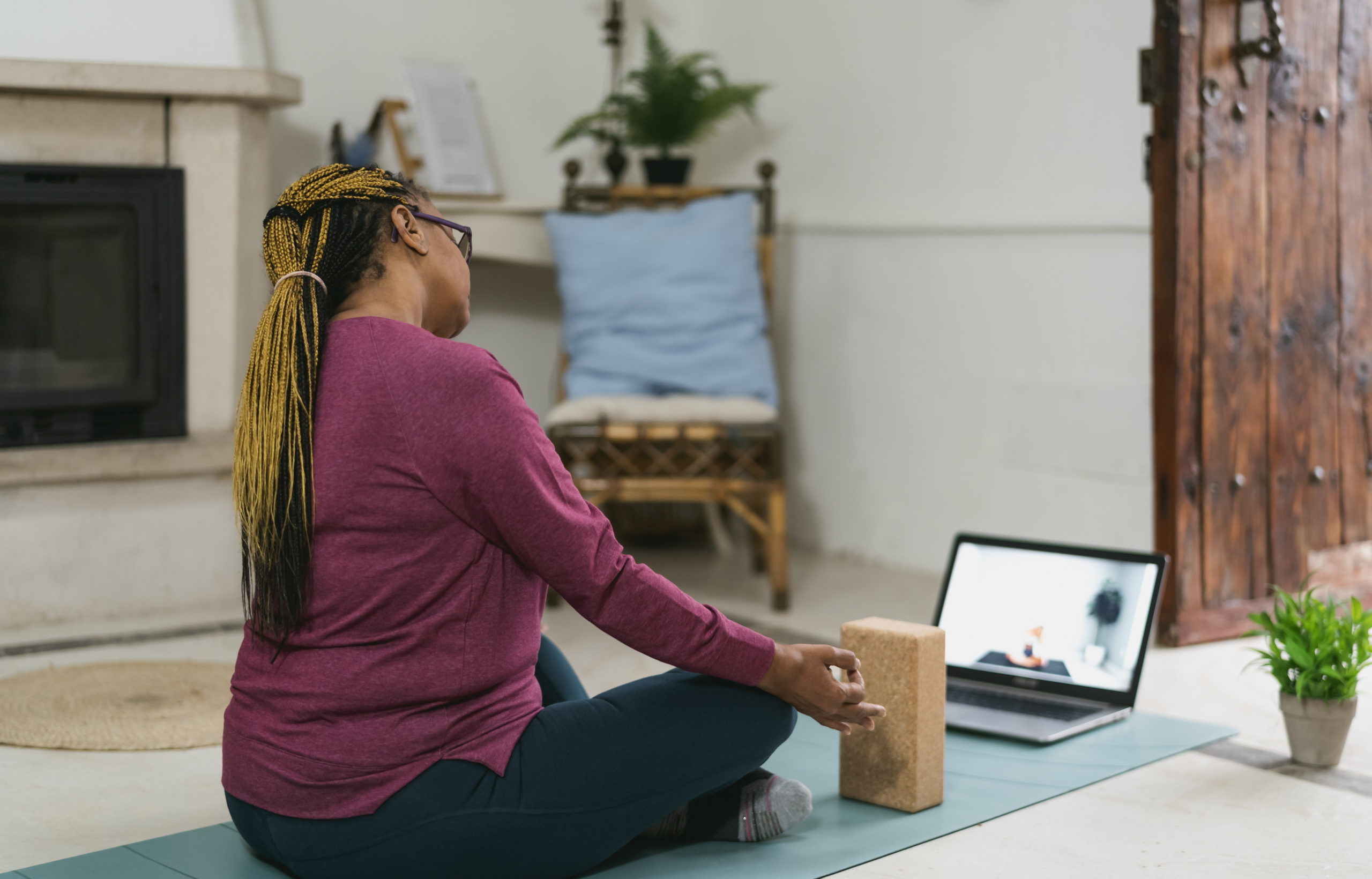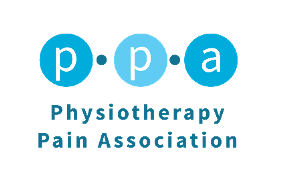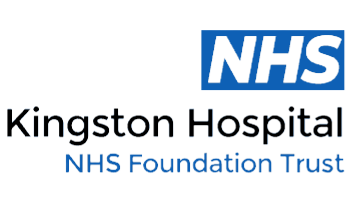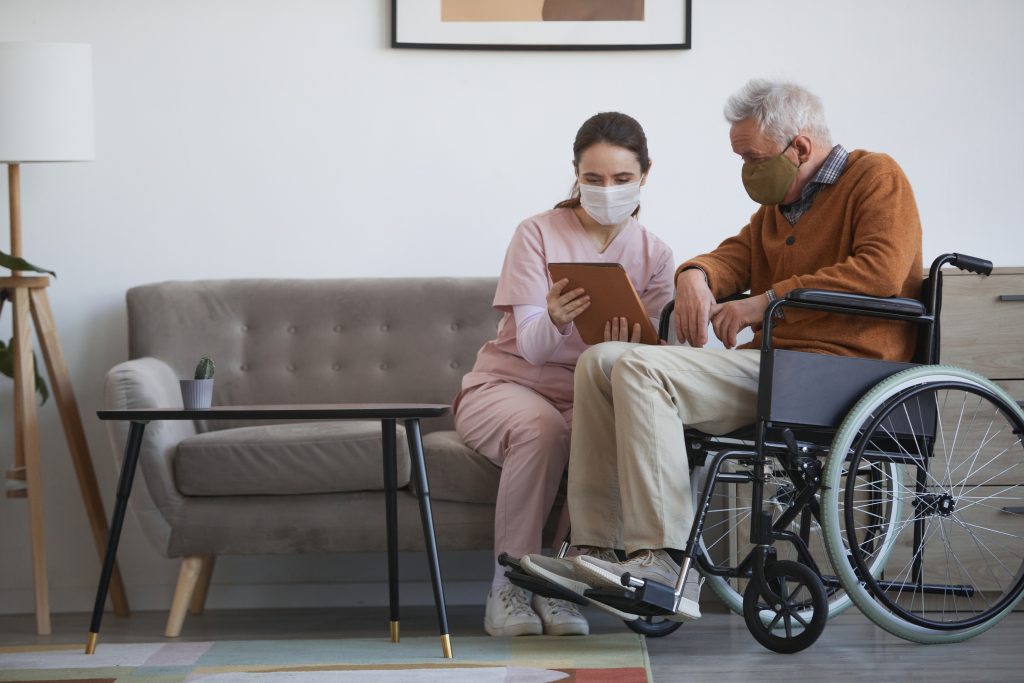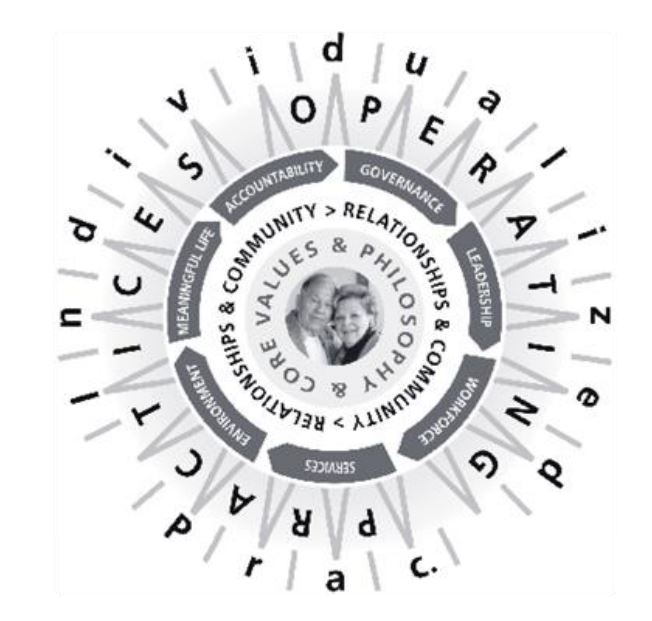1 NHS London. London Dementia Needs Assessment 2011. Planning dementia services and delivering
QIPP for London clusters. London: NHS London, 2011.
2 Shaller D. Patient-Centered Care: what does it take? US: The Commonwealth Fund, 2006.
3 US Institute of Medicine. Crossing the Quality Chasm: A New Health System for the 21st Century. US:
Institute of Medicine, 2001.
4 http://pickerinstitute.org/about/picker-principles/
5 Cronin C. Patient-Centered Care: An Overview of Definitions and Concepts. US: National Health
Council, 2004.
6 The King’s Fund. What Matters to Patients? Developing the Evidence Base for Measuring and
Improving Patient Experience. London: Kings College London and the King’s Fund.
7 Coulter A, Ellins J. Patient-Focused Interventions: A Review of the Evidence. London: Picker Institute
Europe, 2006.
8 The King’s Fund. Reading List. The Point of Care: improving patients’ experience. London: The King’s
Fund, 2012.
9 de Silva D. Helping measure person-centred care. London: The Health Foundation 2014.
10 Collins A. Measuring what really matters. Towards a coherent measurement system to support
person-centred care. London: The Health Foundation 2014.
11 Coulter A, Fitzpatrick R, Cornwell J. The Point of Care. Measures of patients’ experience in hospital:
purpose, methods and uses. London: The King’s Fund, 2009.
12 Alzheimer’s Society. Counting the cost: Caring for people with dementia on hospital wards. London:
Alzheimer’s Society, 2009.
13 Department of Health. Living well with dementia: A National Dementia Strategy. London: Department
of Health, 2009.
14 Department of Health. Quality outcomes for people with dementia – building on the work of the
National Dementia Strategy. London: Department of Health, 2010.
15 National Institute for Health and Clinical Excellence. Dementia Quality Standard advice to the
Secretary of State for Health. NICE, 2010.
16 Robinson L, Gemski A, Abley C, Bond J, Keady J, Campbell S, Samsi K, Manthorpe J. The transition
to dementia – individual and family experiences of receiving a diagnosis: a review. Int Psychogeriatr
2011;23(7):1026-1043.
17 Laakkonen ML, Raivio MM, Eloniemi-Sulkava U, Saarenheimo M, Pietilä M, Tilvis RS, Pitkälä KH.
How do elderly spouse care givers of people with Alzheimer disease experience the disclosure of
dementia diagnosis and subsequent care? J Med Ethics 2008;34(6):427-430.
18 Mormont E, de Fays K, Jamart J. Experiences of the patients and their caregivers regarding the
disclosure of the diagnosis of Alzheimer’s disease: a Belgian retrospective survey. Acta Neurol Belg
2012;112(3):249-254.
19 Shimizu MM, Raicher I, Takahashi DY, Caramelli P, Nitrini R. Disclosure of the diagnosis of
Alzheimer’s disease: caregivers’ opinions in a Brazilian sample. Arq Neuropsiquiatr 2008;66(3B):625-
630.
20 Ducharme F, Kergoat MJ, Antoine P, Pasquier F, Coulombe R. The unique experience of spouses in
early-onset dementia. Am J Alzheimers Dis Other Demen 2013;28(6):634-641.
21 Engberink AO, Pimouguet C, Amouyal M, Gerassimo O, Bourrel G, Berr C. Determinants of support
for dementia patients in general practice: a qualitative approach based on an epidemiological cohort.
Geriatr Psychol Neuropsychiatr Vieil 2013;11(2):157-167.
22 Robinson L, Gemski A, Abley C, Bond J, Keady J, Campbell S, Samsi K, Manthorpe J. The transition
to dementia – individual and family experiences of receiving a diagnosis: a review. Int Psychogeriatr
2011;23(7):1026-1043.
23 Prorok JC, Horgan S, Seitz DP. Health care experiences of people with dementia and their caregivers:
a meta-ethnographic analysis of qualitative studies. CMAJ 2013;185(14):E669-E680.
24 Górska S, Forsyth K, Irvine L, Maciver D, Prior S, Whitehead J, Flockhart J, Fairnie J, Reid J. Servicerelated needs of older people with dementia: perspectives of service users and their unpaid carers. Int
Psychogeriatr 2013;25(7):1107-1114.
25 Carpentier N, Bernard P, Grenier A, Guberman N. Using the life course perspective to study the entry
into the illness trajectory: the perspective of caregivers of people with Alzheimer’s disease. Soc Sci
Med 2010;70(10):1501-1508.
26 Boustani MA, Justiss MD, Frame A, Austrom MG, Perkins AJ, Cai X, Sachs GA, Torke AM, Monahan
P, Hendrie HC. Caregiver and noncaregiver attitudes toward dementia screening. J Am Geriatr Soc
2011;59(4):681-686.
27 Innes A, Szymczynska P, Stark C. Dementia diagnosis and post-diagnostic support in Scottish rural
communities: experiences of people with dementia and their families. Dementia 2014;13(2):233-247.
28 Singh P, Hussain R, Khan A, Irwin L, Foskey R. Dementia care: intersecting informal family care and
formal care systems. J Aging Res (Published online February 2014).
29 van Vliet D, de Vugt ME, Bakker C, Koopmans RT, Pijnenburg YA, Vernooij-Dassen MJ, Verhey FR.
Caregivers’ perspectives on the pre-diagnostic period in early onset dementia: a long and winding
road. Int Psychogeriatr 2011;23(9):1393-1404.
30 Samsi K, Abley C, Campbell S, Keady J, Manthorpe J, Robinson L, Watts S, Bond J. Negotiating a
labyrinth: experiences of assessment and diagnostic journey in cognitive impairment and dementia. Int
J Geriatr Psychiatry 2014;29(1):58-67.
31 Chrisp TA, Tabberer S, Thomas BD, Goddard WA. Dementia early diagnosis: triggers, supports and
constraints affecting the decision to engage with the health care system. Aging Ment Health
2012;16(5):559-565.
32 Justiss MD, Boustani M, Fox C, Katona C, Perkins AJ, Healey PJ, Sachs G, Hui S, Callahan CM,
Hendrie HC, Scott E. Patients’ attitudes of dementia screening across the Atlantic. Int J Geriatr
Psychiatry 2009;24(6):632-637.
33 Boustani M, Perkins AJ, Monahan P, Fox C, Watson L, Hopkins J, Fultz B, Hui S, Unverzagt FW,
Callahan CM, Hendrie HC. Measuring primary care patients’ attitudes about dementia screening. Int J
Geriatr Psychiatry 2008;23(8):812-820.
34 Laakkonen ML, Raivio MM, Eloniemi-Sulkava U, Saarenheimo M, Pietilä M, Tilvis RS, Pitkälä KH.
How do elderly spouse care givers of people with Alzheimer disease experience the disclosure of
dementia diagnosis and subsequent care? J Med Ethics 2008;34(6):427-430.
35 Gruetzner H, Ellor JW, Back N. Identifiable grief responses in persons with Alzheimer’s disease. J Soc
Work End Life Palliat Care 2012;8(2):151-164.
36 Holroyd S, Turnbull Q, Wolf AM. What are patients and their families told about the diagnosis of
dementia? Results of a family survey. Int J Geriatr Psychiatry 2002;17(3):218-221.
37 Ducharme F, Lévesque L, Lachance L, Kergoat MJ, Coulombe R. Challenges associated with
transition to caregiver role following diagnostic disclosure of Alzheimer disease: a descriptive study.
Int J Nurs Stud 2011;48(9):1109-1119.
38 van der Steen JT, Arcand M, Toscani F, de Graas T, Finetti S, Beaulieu M, Brazil K, Nakanishi M,
Nakashima T, Knol DL, Hertogh CM. A family booklet about comfort care in advanced dementia:
three-country evaluation. J Am Med Dir Assoc 2012;13(4):368-375.
39 Chan WC, Ng C, Mok CC, Wong FL, Pang SL, Chiu HF. Lived experience of caregivers of persons
with dementia in Hong Kong: a qualitative study. East Asian Arch Psychiatry 2010;20(4):163-168.
40 Quinn C, Clare L, Pearce A, van Dijkhuizen M. The experience of providing care in the early stages of
dementia: an interpretative phenomenological analysis. Aging Ment Health 2008;12(6):769-778.
41 Prorok JC, Horgan S, Seitz DP. Health care experiences of people with dementia and their caregivers:
a meta-ethnographic analysis of qualitative studies. CMAJ 2013;185(14):E669-E680.
42 Engberink AO, Pimouguet C, Amouyal M, Gerassimo O, Bourrel G, Berr C. Determinants of support
for dementia patients in general practice: a qualitative approach based on an epidemiological cohort.
Geriatr Psychol Neuropsychiatr Vieil 2013;11(2):157-167.
43 Melunsky N, Crellin N, Dudzinski E, Orrell M, Wenborn J, Poland F, Woods B, Charlesworth G. The
experience of family carers attending a joint reminiscence group with people with dementia: a thematic
analysis. Dementia (Published online February 2014).
44 Stokes LA, Combes H, Stokes G. Understanding the dementia diagnosis: the impact on the caregiving
experience. Dementia 2014;13(1):59-78.
45 McDonnell E, Ryan AA. The experience of sons caring for a parent with dementia. Dementia
(Published online April 2013).
46 de Jong JD, Boersma F. Dutch psychogeriatric day-care centers: a qualitative study of the needs and
wishes of carers. Int Psychogeriatr 2009;21(2):268-277.
47 Holroyd S, Turnbull Q, Wolf AM. What are patients and their families told about the diagnosis of
dementia? Results of a family survey. Int J Geriatr Psychiatry 2002;17(3):218-221.
48 Ducharme F, Kergoat MJ, Antoine P, Pasquier F, Coulombe R. The unique experience of spouses in
early-onset dementia. Am J Alzheimers Dis Other Demen 2013;28(6):634-641.
49 Ducharme F, Lévesque L, Lachance L, Kergoat MJ, Coulombe R. Challenges associated with
transition to caregiver role following diagnostic disclosure of Alzheimer disease: a descriptive study.
Int J Nurs Stud 2011;48(9):1109-1119.
50 Forbes DA, Finkelstein S, Blake CM, Gibson M, Morgan DG, Markle-Reid M, Culum I, Thiessen E.
Knowledge exchange throughout the dementia care journey by Canadian rural community-based
health care practitioners, persons with dementia, and their care partners: an interpretive descriptive
study. Rural Remote Health 2012;12(4):2201.
51 Laakkonen ML, Raivio MM, Eloniemi-Sulkava U, Saarenheimo M, Pietilä M, Tilvis RS, Pitkälä KH.
How do elderly spouse care givers of people with Alzheimer disease experience the disclosure of
dementia diagnosis and subsequent care? J Med Ethics 2008;34(6):427-430.
52 Prorok JC, Horgan S, Seitz DP. Health care experiences of people with dementia and their caregivers:
a meta-ethnographic analysis of qualitative studies. CMAJ 2013;185(14):E669-E680.
53 Taşc S, Tekinsoy Kartn P, Ceyhan O, Sungur G, Göriş S. Living with an Alzheimer patient in Turkey. J
Neurosci Nurs 2012;44(4):228-234.
54 de Witt L, Ploeg J, Black M. Living alone with dementia: an interpretive phenomenological study with
older women. J Adv Nurs 2010;66(8):1698-1707.
55 Blake M. Group reminiscence therapy for adults with dementia: a review. Br J Community Nurs
2013;18(5):228-233.
56 Wang LQ, Chien WT, Lee IY. An experimental study on the effectiveness of a mutual support group
for family caregivers of a relative with dementia in mainland China. Contemp Nurse 2012;40(2):210-
224.
57 Chou HK, Yan SH, Lin IC, Tsai MT, Chen CC, Woung LC. A pilot study of the telecare medical
support system as an intervention in dementia care: the views and experiences of primary caregivers.
J Nurs Res 2012;20(3):169-180.
58 Prorok JC, Horgan S, Seitz DP. Health care experiences of people with dementia and their caregivers:
a meta-ethnographic analysis of qualitative studies. CMAJ 2013;185(14):E669-E680.
59 Czaja SJ, Loewenstein D, Schulz R, Nair SN, Perdomo D. A videophone psychosocial intervention for
dementia caregivers. Am J Geriatr Psychiatry 2013;21(11):1071-1081.
60 Chou HK, Yan SH, Lin IC, Tsai MT, Chen CC, Woung LC. A pilot study of the telecare medical
support system as an intervention in dementia care: the views and experiences of primary caregivers.
J Nurs Res 2012;20(3):169-180.
61 Czaja SJ, Loewenstein D, Schulz R, Nair SN, Perdomo D. A videophone psychosocial intervention for
dementia caregivers. Am J Geriatr Psychiatry 2013;21(11):1071-1081.
62 Górska S, Forsyth K, Irvine L, Maciver D, Prior S, Whitehead J, Flockhart J, Fairnie J, Reid J. Servicerelated needs of older people with dementia: perspectives of service users and their unpaid carers. Int
Psychogeriatr 2013;25(7):1107-1114.
63 Keady J, Jones L, Ward R, Koch S, Swarbrick C, Hellström I, Davies-Quarrell V, Williams S.
Introducing the bio-psycho-social-physical model of dementia through a collective case study design.
J Clin Nurs 2013;22(19-20):2768-2777.
64 Górska S, Forsyth K, Irvine L, Maciver D, Prior S, Whitehead J, Flockhart J, Fairnie J, Reid J. Servicerelated needs of older people with dementia: perspectives of service users and their unpaid carers. Int
Psychogeriatr 2013;25(7):1107-1114.
65 Ducharme F, Kergoat MJ, Antoine P, Pasquier F, Coulombe R. The unique experience of spouses in
early-onset dementia. Am J Alzheimers Dis Other Demen 2013;28(6):634-641.
66 Chou HK, Yan SH, Lin IC, Tsai MT, Chen CC, Woung LC. A pilot study of the telecare medical
support system as an intervention in dementia care: the views and experiences of primary caregivers.
J Nurs Res 2012;20(3):169-180.
67 Madsen R, Birkelund R. ‘The path through the unknown’: the experience of being a relative of a
dementia-suffering spouse or parent. J Clin Nurs 2013;22(21-22):3024-3031.
68 Robinson L, Gemski A, Abley C, Bond J, Keady J, Campbell S, Samsi K, Manthorpe J. The transition
to dementia – individual and family experiences of receiving a diagnosis: a review. Int Psychogeriatr
2011;23(7):1026-1043.
69 Hsiao HC, Chao HC, Wang JJ. Features of problematic eating behaviors among community-dwelling
older adults with dementia: family caregivers’ experience. Geriatr Nurs 2013;34(5):361-365.
70 Taşc S, Tekinsoy Kartn P, Ceyhan O, Sungur G, Göriş S. Living with an Alzheimer patient in Turkey. J
Neurosci Nurs 2012;44(4):228-234.
71 Simpson C, Carter P. Dementia behavioural and psychiatric symptoms: effect on caregiver’s sleep. J
Clin Nurs 2013;22(21-22):3042-3052.
72 Digby R, Moss C, Bloomer M. Transferring from an acute hospital and settling into a subacute facility:
the experience of patients with dementia. Int J Older People Nurs 2012;7(1):57-64.
73 Melunsky N, Crellin N, Dudzinski E, Orrell M, Wenborn J, Poland F, Woods B, Charlesworth G. The
experience of family carers attending a joint reminiscence group with people with dementia: a thematic
analysis. Dementia (Published online February 2014).
74 Czaja SJ, Loewenstein D, Schulz R, Nair SN, Perdomo D. A videophone psychosocial intervention for
dementia caregivers. Am J Geriatr Psychiatry 2013;21(11):1071-1081.
75 Qadir F, Gulzar W, Haqqani S, Khalid A. A pilot study examining the awareness, attitude, and burden
of informal caregivers of patients with dementia. Care Manag J 2013;14(4):230-240.
76 Vellone E, Piras G, Venturini G, Alvaro R, Cohen MZ. The experience of quality of life for caregivers of
people with Alzheimer’s disease living in Sardinia, Italy. J Transcult Nurs 2012;23(1):46-55.
77 Botsford J, Clarke CL, Gibb CE. Dementia and relationships: experiences of partners in minority
ethnic communities. J Adv Nurs 2012;68(10):2207-2217.
78 Merrick K, Camic PM, O’Shaughnessy M. Couples constructing their experiences of dementia: a
relational perspective. Dementia (Published online December 2013).
79 Quinn C, Clare L, Woods RT. Balancing needs: the role of motivations, meanings and relationship
dynamics in the experience of informal caregivers of people with dementia. Dementia (Published
online July 2013).
80 Mushi D, Rongai A, Paddick SM, Dotchin C, Mtuya C, Walker R. Social representation and practices
related to dementia in Hai District of Tanzania. BMC Public Health 2014;14(1):260.
81 Duggleby WD, Swindle J, Peacock S, Ghosh S. A mixed methods study of hope, transitions, and
quality of life in family caregivers of persons with Alzheimer’s disease. BMC Geriatr 2011;11:88.
82 Nichols KR, Fam D, Cook C, Pearce M, Elliot G, Baago S, Rockwood K, Chow TW. When dementia is
in the house: needs assessment survey for young caregivers. Can J Neurol Sci 2013;40(1):21-28.
83 Innes A, Morgan D, Kosteniuk J. Dementia care in rural and remote settings: a systematic review of
informal/family caregiving. Maturitas 2011;68(1):34-46.
84 Peacock S, Duggleby W, Koop P. The lived experience of family caregivers who provided end-of-life
care to persons with advanced dementia. Palliat Support Care 2014;12(2):117-126.
85 Keady J, Jones L, Ward R, Koch S, Swarbrick C, Hellström I, Davies-Quarrell V, Williams S.
Introducing the bio-psycho-social-physical model of dementia through a collective case study design.
J Clin Nurs 2013;22(19-20):2768-2777.
86 Peacock S, Duggleby W, Koop P. The lived experience of family caregivers who provided end-of-life
care to persons with advanced dementia. Palliat Support Care 2014;12(2):117-126.
87 Digby R, Bloomer MJ. People with dementia and the hospital environment: the view of patients and
family carers. Int J Older People Nurs 2014;9(1):34-43.
88 Brittain K, Corner L, Robinson L, Bond J. Ageing in place and technologies of place: the lived
experience of people with dementia in changing social, physical and technological environments.
Sociol Health Illn 2010;32(2):272-287.
89 Moyle W, Murfield J, Venturto L, Griffiths S, Grimbeek P, McAllister M, Marshall J. Dementia and its
influence on quality of life and what it means to be valued: family members’ perceptions. Dementia
(Published online February 2013).
90 Aminzadeh F, Dalziel WB, Molnar FJ, Garcia LJ. Meanings, functions, and experiences of living at
home for individuals with dementia at the critical point of relocation. J Gerontol Nurs 2010;36(6):28-35.
91 Edvardsson D, Nordvall K. Lost in the present but confident of the past: experiences of being in a
psycho-geriatric unit as narrated by persons with dementia. J Clin Nurs 2008;17(4):491-498.
92 Ducharme F, Lévesque L, Lachance L, Kergoat MJ, Coulombe R. Challenges associated with
transition to caregiver role following diagnostic disclosure of Alzheimer disease: a descriptive study.
Int J Nurs Stud 2011;48(9):1109-1119.
93 Taşc S, Tekinsoy Kartn P, Ceyhan O, Sungur G, Göriş S. Living with an Alzheimer patient in Turkey. J
Neurosci Nurs 2012;44(4):228-234.
94 Forbes DA, Finkelstein S, Blake CM, Gibson M, Morgan DG, Markle-Reid M, Culum I, Thiessen E.
Knowledge exchange throughout the dementia care journey by Canadian rural community-based
health care practitioners, persons with dementia, and their care partners: an interpretive descriptive
study. Rural Remote Health 2012;12(4):2201.
95 Sussman T, Regehr C. The influence of community-based services on the burden of spouses caring
for their partners with dementia. Health Soc Work 2009;34(1):29-39.
96 Moyle W, Gracia N, Murfield JE, Griffiths SG, Venturato L. Assessing quality of life of older people
with dementia in long-term care: a comparison of two self-report measures. J Clin Nurs 2012;21(11-
12):1632-1640.
97 Hsiao HC, Chao HC, Wang JJ. Features of problematic eating behaviors among community-dwelling
older adults with dementia: family caregivers’ experience. Geriatr Nurs 2013;34(5):361-365.
98 Moyle W, Venturato L, Cooke M, Hughes J, van Wyk S, Marshall J. Promoting value in dementia care:
staff, resident and family experience of the capabilities model of dementia care. Aging Ment Health
2013;17(5):587-594.
99 Nowell ZC, Thornton A, Simpson J. The subjective experience of personhood in dementia care
settings. Dementia 2013;12(4):394-409.
100 Moyle W, Murfield J, Venturto L, Griffiths S, Grimbeek P, McAllister M, Marshall J. Dementia and its
influence on quality of life and what it means to be valued: family members’ perceptions. Dementia
(Published online February 2013).
101 Moyle W, Venturato L, Cooke M, Hughes J, van Wyk S, Marshall J. Promoting value in dementia care:
staff, resident and family experience of the capabilities model of dementia care. Aging Ment Health
2013;17(5):587-594.
102 Nowell ZC, Thornton A, Simpson J. The subjective experience of personhood in dementia care
settings. Dementia 2013;12(4):394-409.
103 de Jong JD, Boersma F. Dutch psychogeriatric day-care centers: a qualitative study of the needs and
wishes of carers. Int Psychogeriatr 2009;21(2):268-277.
104 Morhardt D, Pereyra M, Iris M. Seeking a diagnosis for memory problems: the experiences of
caregivers and families in 5 limited English proficiency communities. Alzheimer Dis Assoc Disord
2010;24 Suppl:S42-S48.
105 Qadir F, Gulzar W, Haqqani S, Khalid A. A pilot study examining the awareness, attitude, and burden
of informal caregivers of patients with dementia. Care Manag J 2013;14(4):230-240.
106 Caldwell L, Low LF, Brodaty H. Caregivers’ experience of the decision-making process for placing a
person with dementia into a nursing home: comparing caregivers from Chinese ethnic minority with
those from English-speaking backgrounds. Int Psychogeriatr 2014;26(3):413-424.
107 Botsford J, Clarke CL, Gibb CE. Dementia and relationships: experiences of partners in minority
ethnic communities. J Adv Nurs 2012;68(10):2207-2217.
108 van der Steen JT, Arcand M, Toscani F, de Graas T, Finetti S, Beaulieu M, Brazil K, Nakanishi M,
Nakashima T, Knol DL, Hertogh CM. A family booklet about comfort care in advanced dementia:
three-country evaluation. J Am Med Dir Assoc 2012;13(4):368-375.
109 Hodge DR, Sun F. Positive feelings of caregiving among Latino Alzheimer’s family caregivers:
understanding the role of spirituality. Aging Ment Health 2012;16(6):689-698.
110 Olson MC. “The heart still beat, but the brain doesn’t answer”. Perception and experience of old-age
dementia in the Milwaukee Hmong community. Theor Med Bioeth 1999;20(1):85-95.
111 Price E. Coming out to care: gay and lesbian carers’ experiences of dementia services. Health Soc
Care Community 2010;18(2):160-168.
112 Prorok JC, Horgan S, Seitz DP. Health care experiences of people with dementia and their caregivers:
a meta-ethnographic analysis of qualitative studies. CMAJ 2013;185(14):E669-E680.
113 Crowther J, Wilson KC, Horton S, Lloyd-Williams M. Compassion in healthcare – lessons from a
qualitative study of the end of life care of people with dementia. J R Soc Med 2013;106(12):492-497.
114 Samsi K, Manthorpe J. Everyday decision-making in dementia: findings from a longitudinal interview
study of people with dementia and family carers. Int Psychogeriatr 2013;25(6):949-961.
115 Heggestad AK, Nortvedt P, Slettebø Å. ‘Like a prison without bars’: dementia and experiences of
dignity. Nurs Ethics 2013;20(8):881-892.
116 Russell C, Middleton H, Shanley C. Dying with dementia: the views of family caregivers about quality
of life. Australas J Ageing 2008;27(2):89-92.
117 Digby R, Moss C, Bloomer M. Transferring from an acute hospital and settling into a subacute facility:
the experience of patients with dementia. Int J Older People Nurs 2012;7(1):57-64.
118 Crowther J, Wilson KC, Horton S, Lloyd-Williams M. Compassion in healthcare – lessons from a
qualitative study of the end of life care of people with dementia. J R Soc Med 2013;106(12):492-497.
119 Prorok JC, Horgan S, Seitz DP. Health care experiences of people with dementia and their caregivers:
a meta-ethnographic analysis of qualitative studies. CMAJ 2013;185(14):E669-E680.
120 Digby R, Moss C, Bloomer M. Transferring from an acute hospital and settling into a subacute facility:
the experience of patients with dementia. Int J Older People Nurs 2012;7(1):57-64.
121 Crowther J, Wilson KC, Horton S, Lloyd-Williams M. Compassion in healthcare – lessons from a
qualitative study of the end of life care of people with dementia. J R Soc Med 2013;106(12):492-497.
122 Innes A, Surr C. Measuring the well-being of people with dementia living in formal care settings: the
use of dementia care mapping. Aging Ment Health 2001;5(3):258-268.
123 Moyle W, Venturato L, Cooke M, Hughes J, van Wyk S, Marshall J. Promoting value in dementia care:
staff, resident and family experience of the capabilities model of dementia care. Aging Ment Health
2013;17(5):587-594.
124 Hochgraeber I, Riesner C, Schoppmann S. The experience of people with dementia in a social care
group: case study. Dementia 2013;12(6):751-768.
125 Moyle W, O’Dwyer S. Quality of life in people living with dementia in nursing homes. Curr Opin
Psychiatry 2012;25(6):480-484.
126 Moyle W, Murfield J, Venturto L, Griffiths S, Grimbeek P, McAllister M, Marshall J. Dementia and its
influence on quality of life and what it means to be valued: family members’ perceptions. Dementia
(Published online February 2013).
127 Hsiao HC, Chao HC, Wang JJ. Features of problematic eating behaviors among community-dwelling
older adults with dementia: family caregivers’ experience. Geriatr Nurs 2013;34(5):361-365.
128 Helgesen AK, Larsson M, Athlin E. How do relatives of persons with dementia experience their role in
the patient participation process in special care units? J Clin Nurs 2013;22(11-12):1672-1681.
129 Jurgens FJ, Clissett P, Gladman JR, Harwood RH. Why are family carers of people with dementia
dissatisfied with general hospital care? A qualitative study. BMC Geriatr 2012;12:57.
130 Hong SI, Luo N, Yap P. Maximizing a nurturing care style for persons with dementia: a personcentered analysis. Am J Geriatr Psychiatry 2013;21(10):987-998.
131 Hsiao HC, Chao HC, Wang JJ. Features of problematic eating behaviors among community-dwelling
older adults with dementia: family caregivers’ experience. Geriatr Nurs 2013;34(5):361-365.
132 Digby R, Moss C, Bloomer M. Transferring from an acute hospital and settling into a subacute facility:
the experience of patients with dementia. Int J Older People Nurs 2012;7(1):57-64.
133 Samsi K, Manthorpe J. Everyday decision-making in dementia: findings from a longitudinal interview
study of people with dementia and family carers. Int Psychogeriatr 2013;25(6):949-961.
134 Smebye KL, Kirkevold M, Engedal K. How do persons with dementia participate in decision making
related to health and daily care? A multi-case study. BMC Health Serv Res 2012;12:241.
135 Brataas HV, Bjugan H, Wille T, Hellzen O. Experiences of day care and collaboration among people
with mild dementia. J Clin Nurs 2010;19(19-20):2839-2848.
136 Stephan A, Afram B, Renom Guiteras A, Gerlach A, Meyer G. Persons with dementia in the nursing
home: family caregivers provide information on grounds for admission and how they experience the
situation afterward. Accompaniment and support in the transition phase. Pflege Z 2013;66(4):208-212.
137 Helgesen AK, Larsson M, Athlin E. How do relatives of persons with dementia experience their role in
the patient participation process in special care units? J Clin Nurs 2013;22(11-12):1672-1681.
138 Tanner D. Co-research with older people with dementia: experience and reflections. J Ment Health
2012;21(3):296-306.
139 de Jong JD, Boersma F. Dutch psychogeriatric day-care centers: a qualitative study of the needs and
wishes of carers. Int Psychogeriatr 2009;21(2):268-277.
140 Stephan A, Afram B, Renom Guiteras A, Gerlach A, Meyer G. Persons with dementia in the nursing
home: family caregivers provide information on grounds for admission and how they experience the
situation afterward. Accompaniment and support in the transition phase. Pflege Z 2013;66(4):208-212.
141 Helgesen AK, Larsson M, Athlin E. How do relatives of persons with dementia experience their role in
the patient participation process in special care units? J Clin Nurs 2013;22(11-12):1672-1681.
142 Kwon S, Tae YS. The experience of adult Korean children caring for parents institutionalized with
dementia. J Korean Acad Nurs 2014;44(1):41-54.
143 Shim B, Barroso J, Gilliss CL, Davis LL. Finding meaning in caring for a spouse with dementia. Appl
Nurs Res 2013;26(3):121-126.
144 Givens JL, Lopez RP, Mazor KM, Mitchell SL. Sources of stress for family members of nursing home
residents with advanced dementia. Alzheimer Dis Assoc Disord 2012;26(3):254-259.
145 Raymond M, Warner A, Davies N, Iliffe S, Manthorpe J, Ahmedzhai S. Palliative care services for
people with dementia: a synthesis of the literature reporting the views and experiences of
professionals and family carers. Dementia 2014;13(1):96-110.
146 Martin F, Turner A, Wallace LM, Choudhry K, Bradbury N. Perceived barriers to self-management for
people with dementia in the early stages. Dementia 2013;12(4):481-493.
147 Martin F, Turner A, Wallace LM, Stanley D, Jesuthasan J, Bradbury N. Qualitative evaluation of a selfmanagement intervention for people in the early stage of dementia. Dementia (Published online
August 2013).
148 Samsi K, Manthorpe J. Everyday decision-making in dementia: findings from a longitudinal interview
study of people with dementia and family carers. Int Psychogeriatr 2013;25(6):949-961.
149 Forbes DA, Finkelstein S, Blake CM, Gibson M, Morgan DG, Markle-Reid M, Culum I, Thiessen E.
Knowledge exchange throughout the dementia care journey by Canadian rural community-based
health care practitioners, persons with dementia, and their care partners: an interpretive descriptive
study. Rural Remote Health 2012;12(4):2201.
150 Goodman C, Amador S, Elmore N, Machen I, Mathie E. Preferences and priorities for ongoing and
end-of-life care: a qualitative study of older people with dementia resident in care homes. Int J Nurs
Stud 2013;50(12):1639-1647.
151 Givens JL, Lopez RP, Mazor KM, Mitchell SL. Sources of stress for family members of nursing home
residents with advanced dementia. Alzheimer Dis Assoc Disord 2012;26(3):254-259.
152 van Uden N, Van den Block L, van der Steen JT, Onwuteaka-Philipsen BD, Vandervoort A, Vander
Stichele R, Deliens L. Quality of dying of nursing home residents with dementia as judged by relatives.
Int Psychogeriatr 2013;25(10):1697-1707.
153 Ashton S, Roe B, Jack B, McClelland B. A study to explore the experience of advanced care planning
among family caregivers and relatives of people with advanced dementia. BMJ Support Palliat Care
2011;1(1):91.
154 Deep KS, Hunter A, Murphy K, Volandes A. “It helps me see with my heart”: how video informs
patients’ rationale for decisions about future care in advanced dementia. Patient Educ Couns
2010;81(2):229-234.
155 Dening KH, Greenish W, Jones L, Mandal U, Sampson EL. Barriers to providing end-of-life care for
people with dementia: a whole-system qualitative study. BMJ Support Palliat Care 2012;2(2):103-107.
156 Shega JW, Hougham GW, Stocking CB, Cox-Hayley D, Sachs GA. Patients dying with dementia:
experience at the end of life and impact of hospice care. J Pain Symptom Manage 2008;35(5):499-
507.
157 Helgesen AK, Larsson M, Athlin E. How do relatives of persons with dementia experience their role in
the patient participation process in special care units? J Clin Nurs 2013;22(11-12):1672-1681.
158 Laakkonen ML, Raivio MM, Eloniemi-Sulkava U, Saarenheimo M, Pietilä M, Tilvis RS, Pitkälä KH.
How do elderly spouse care givers of people with Alzheimer disease experience the disclosure of
dementia diagnosis and subsequent care? J Med Ethics 2008;34(6):427-430.
159 Górska S, Forsyth K, Irvine L, Maciver D, Prior S, Whitehead J, Flockhart J, Fairnie J, Reid J. Servicerelated needs of older people with dementia: perspectives of service users and their unpaid carers. Int
Psychogeriatr 2013;25(7):1107-1114.
160 von Kutzleben M, Schmid W, Halek M, Holle B, Bartholomeyczik S. Community-dwelling persons with
dementia: what do they need? What do they demand? What do they do? A systematic review on the
subjective experiences of persons with dementia. Aging Ment Health 2012;16(3):378-390.
161 Stephan A, Afram B, Renom Guiteras A, Gerlach A, Meyer G. Persons with dementia in the nursing
home: family caregivers provide information on grounds for admission and how they experience the
situation afterward. Accompaniment and support in the transition phase. Pflege Z 2013;66(4):208-212.
162 Stokes LA, Combes H, Stokes G. Understanding the dementia diagnosis: the impact on the caregiving
experience. Dementia 2014;13(1):59-78.
163 Stephan A, Afram B, Renom Guiteras A, Gerlach A, Meyer G. Persons with dementia in the nursing
home: family caregivers provide information on grounds for admission and how they experience the
situation afterward. Accompaniment and support in the transition phase. Pflege Z 2013;66(4):208-212.
164 Ducharme F, Kergoat MJ, Antoine P, Pasquier F, Coulombe R. The unique experience of spouses in
early-onset dementia. Am J Alzheimers Dis Other Demen 2013;28(6):634-641.
165 Ducharme F, Lévesque L, Lachance L, Kergoat MJ, Coulombe R. Challenges associated with
transition to caregiver role following diagnostic disclosure of Alzheimer disease: a descriptive study.
Int J Nurs Stud 2011;48(9):1109-1119.
166 Peacock SC. The experience of providing end-of-life care to a relative with advanced dementia: an
integrative literature review. Palliat Support Care 2013;11(2):155-168.
167 Kindell J, Sage K, Wilkinson R, Keady J. Living with semantic dementia: a case study of one family’s
experience. Qual Health Res 2014;24(3):401-411.
168 Papastavrou E, Charalambous A, Tsangari H, Karayiannis G. The burdensome and depressive
experience of caring: what cancer, schizophrenia, and Alzheimer’s disease caregivers have in
common. Cancer Nurs 2012;35(3):187-194.
169 Hydén LC, Nilsson E. Couples with dementia: positioning the ‘we’. Dementia (Published online
October 2013).
170 de la Cuesta-Benjumea C. Strategies for the relief of burden in advanced dementia care-giving. J Adv
Nurs 2011;67(8):1790-1799.
171 Ablitt A, Jones G, Muers J. Awareness of carer distress in people with dementia. Int J Geriatr
Psychiatry 2010;25(12):1246-1252.
172 Papastavrou E, Andreou P, Middleton N, Papacostas S, Georgiou IK. Factors associated with quality
of life among family members of patients with dementia in Cyprus. Int Psychogeriatr 2014;26(3):443-
452.
173 Sun F. Caregiving stress and coping: A thematic analysis of Chinese family caregivers of persons with
dementia. Dementia (Published online April 2013).
174 Ablitt A, Jones GV, Muers J. Living with dementia: a systematic review of the influence of relationship
factors. Aging Ment Health 2009;13(4):497-511.
175 Sussman T, Regehr C. The influence of community-based services on the burden of spouses caring
for their partners with dementia. Health Soc Work 2009;34(1):29-39.
176 Liken MA. (Not) a Hallmark holiday. Experience of family caregivers of a relative with Alzheimer’s
disease. J Psychosoc Nurs Ment Health Serv 2001;39(12):32-37.
177 Kasper JD, Black BS, Shore AD, Rabins PV. Evaluation of the validity and reliability of the Alzheimer
disease-related quality of life assessment instrument. Alzheimer Dis Assoc Disord 2009;23(3):275-
284.
178 Harris PB. Dementia and friendship: the quality and nature of the relationships that remain. Int J Aging
Hum Dev 2013;76(2):141-164.
179 Shub D, Bass DM, Morgan RO, Judge KS, Snow AL, Wilson NL, Walder A, Murry B, Kunik ME.
Irritability and social isolation in dementia patients with and without depression. J Geriatr Psychiatry
Neurol 2011;24(4):229-234.
180 Moyle W, Jones C, Cooke M, O’Dwyer S, Sung B, Drummond S. Connecting the person with
dementia and family: a feasibility study of a telepresence robot. BMC Geriatr 2014;14:7.
181 Mazaheri M, Eriksson LE, Heikkilä K, Nasrabadi AN, Ekman SL, Sunvisson H. Experiences of living
with dementia: qualitative content analysis of semi-structured interviews. J Clin Nurs 2013;22(21-
22):3032-3041.
182 Górska S, Forsyth K, Irvine L, Maciver D, Prior S, Whitehead J, Flockhart J, Fairnie J, Reid J. Servicerelated needs of older people with dementia: perspectives of service users and their unpaid carers. Int
Psychogeriatr 2013;25(7):1107-1114.
183 Hochgraeber I, Riesner C, Schoppmann S. The experience of people with dementia in a social care
group: case study. Dementia 2013;12(6):751-768.
184 Harris PB. Dementia and friendship: the quality and nature of the relationships that remain. Int J Aging
Hum Dev 2013;76(2):141-164.
185 Lawrence V, Samsi K, Banerjee S, Morgan C, Murray J. Threat to valued elements of life: the
experience of dementia across three ethnic groups. Gerontologist 2011;51(1):39-50.
186 Moyle W, O’Dwyer S. Quality of life in people living with dementia in nursing homes. Curr Opin
Psychiatry 2012;25(6):480-484.
187 Brooker DJ, Argyle E, Scally AJ, Clancy D. The enriched opportunities programme for people with
dementia: a cluster-randomised controlled trial in 10 extra care housing schemes. Aging Ment Health
2011;15(8):1008-1017.
188 Johannessen A, Möller A. Experiences of persons with early-onset dementia in everyday life: a
qualitative study. Dementia 2013;12(4):410-424.
189 Lopez RP, Mazor KM, Mitchell SL, Givens JL. What is family-centered care for nursing home
residents with advanced dementia? Am J Alzheimers Dis Other Demen 2013;28(8):763-768.
190 Brataas HV, Bjugan H, Wille T, Hellzen O. Experiences of day care and collaboration among people
with mild dementia. J Clin Nurs 2010;19(19-20):2839-2848.
191 Caddell LS, Clare L. A profile of identity in early-stage dementia and a comparison with healthy older
people. Aging Ment Health 2013;17(3):319-327.
192 Genoe MR, Dupuis SL. The role of leisure within the dementia context. Dementia 2014;13(1):33-58.
193 Mak W. Self-reported goal pursuit and purpose in life among people with dementia. J Gerontol B
Psychol Sci Soc Sci 2011;66(2):177-184.
194 Martin F, Turner A, Wallace LM, Stanley D, Jesuthasan J, Bradbury N. Qualitative evaluation of a selfmanagement intervention for people in the early stage of dementia. Dementia (Published online
August 2013).
195 Lopez RP, Mazor KM, Mitchell SL, Givens JL. What is family-centered care for nursing home
residents with advanced dementia? Am J Alzheimers Dis Other Demen 2013;28(8):763-768.
196 Clare L, Rowlands J, Bruce E, Surr C, Downs M. The experience of living with dementia in residential
care: an interpretative phenomenological analysis. Gerontologist 2008;48(6):711-720.
197 Clark-McGhee K, Castro M. A narrative analysis of poetry written from the words of people given a
diagnosis of dementia. Dementia (Published online May 2013).
198 Clemerson G, Walsh S, Isaac C. Towards living well with young onset dementia: An exploration of
coping from the perspective of those diagnosed. Dementia (Published online February 2013).
199 Harmer BJ, Orrell M. What is meaningful activity for people with dementia living in care homes? A
comparison of the views of older people with dementia, staff and family carers. Aging Ment Health
2008;12(5):548-558.
200 Phinney A. Living with dementia from the patient’s perspective. J Gerontol Nurs 1998;24(6):8-15.
201 Edvardsson D, Nordvall K. Lost in the present but confident of the past: experiences of being in a
psycho-geriatric unit as narrated by persons with dementia. J Clin Nurs 2008;17(4):491-498.
202 Moyle W, Gracia N, Murfield JE, Griffiths SG, Venturato L. Assessing quality of life of older people
with dementia in long-term care: a comparison of two self-report measures. J Clin Nurs 2012;21(11-
12):1632-1640.
203 Peacock SC. The experience of providing end-of-life care to a relative with advanced dementia: an
integrative literature review. Palliat Support Care 2013;11(2):155-168.
204 Laakkonen ML, Raivio MM, Eloniemi-Sulkava U, Saarenheimo M, Pietilä M, Tilvis RS, Pitkälä KH.
How do elderly spouse care givers of people with Alzheimer disease experience the disclosure of
dementia diagnosis and subsequent care? J Med Ethics 2008;34(6):427-430.
205 Mazaheri M, Eriksson LE, Heikkilä K, Nasrabadi AN, Ekman SL, Sunvisson H. Experiences of living
with dementia: qualitative content analysis of semi-structured interviews. J Clin Nurs 2013;22(21-
22):3032-3041.
206 Dawson NT, Powers SM, Krestar M, Yarry SJ, Judge KS. Predictors of self-reported psychosocial
outcomes in individuals with dementia. Gerontologist 2013;53(5):748-759.
207 Wolverson Radbourne EL, Clarke C, Moniz-Cook E. Remaining hopeful in early-stage dementia: a
qualitative study. Aging Ment Health 2010;14(4):450-460.
208 de Boer ME, Hertogh CM, Dröes RM, Riphagen II, Jonker C, Eefsting JA. Suffering from dementia –
the patient’s perspective: a review of the literature. Int Psychogeriatr 2007;19(6):1021-1039.
209 de Souza-Talarico JN, Chaves EC, Nitrini R, Caramelli P. Stress and coping in older people with
Alzheimer’s disease. J Clin Nurs 2009;18(3):457-465.
210 Lin Kiat Yap P, Yen Ni Goh J, Henderson LM, Min Han P, Shin Ong K, Si Ling Kwek S, Yi Hui Ong E,
Pui Kwan Loh D. How do Chinese patients with dementia rate their own quality of life? Int
Psychogeriatr 2008;20(3):482-493.
211 Silva P, Kergoat MJ, Shatenstein B. Challenges in managing the diet of older adults with early-stage
Alzheimer dementia: a caregiver perspective. J Nutr Health Aging 2013;17(2):142-147.
212 McLaren AN, Lamantia MA, Callahan CM. Systematic review of non-pharmacologic interventions to
delay functional decline in community-dwelling patients with dementia. Aging Ment Health
2013;17(6):655-666.
213 Hsiao HC, Chao HC, Wang JJ. Features of problematic eating behaviors among community-dwelling
older adults with dementia: family caregivers’ experience. Geriatr Nurs 2013;34(5):361-365.
214 Simpson C, Carter P. Dementia caregivers’ lived experience of sleep. Clin Nurse Spec
2013;27(6):298-306.
215 Johansson L, Christensson L, Sidenvall B. Managing mealtime tasks: told by persons with dementia. J
Clin Nurs 2011;20(17-18):2552-2562.
216 Barnes S, Wasielewska A, Raiswell C, Drummond B. Exploring the mealtime experience in residential
care settings for older people: an observational study. Health Soc Care Community 2013;21(4):442-
450.
217 Quinn C, Clare L, Woods B. The impact of the quality of relationship on the experiences and wellbeing
of caregivers of people with dementia: a systematic review. Aging Ment Health 2009;13(2):143-154.
218 McCarthy M, Addington-Hall J, Altmann D. The experience of dying with dementia: a retrospective
study. Int J Geriatr Psychiatry 1997;12(3):404-409.
219 Madsen R, Birkelund R. ‘The path through the unknown’: the experience of being a relative of a
dementia-suffering spouse or parent. J Clin Nurs 2013;22(21-22):3024-3031.
220 Robinson L, Gemski A, Abley C, Bond J, Keady J, Campbell S, Samsi K, Manthorpe J. The transition
to dementia – individual and family experiences of receiving a diagnosis: a review. Int Psychogeriatr
2011;23(7):1026-1043.
221 Peacock SC. The experience of providing end-of-life care to a relative with advanced dementia: an
integrative literature review. Palliat Support Care 2013;11(2):155-168.
222 Taşc S, Tekinsoy Kartn P, Ceyhan O, Sungur G, Göriş S. Living with an Alzheimer patient in Turkey. J
Neurosci Nurs 2012;44(4):228-234.
223 Laakkonen ML, Raivio MM, Eloniemi-Sulkava U, Saarenheimo M, Pietilä M, Tilvis RS, Pitkälä KH.
How do elderly spouse care givers of people with Alzheimer disease experience the disclosure of
dementia diagnosis and subsequent care? J Med Ethics 2008;34(6):427-430.
224 García-Alberca JM, Cruz B, Lara JP, Garrido V, Lara A, Gris E, Gonzalez-Herero V. The experience
of caregiving: the influence of coping strategies on behavioural and psychological symptoms in
patients with Alzheimer’s disease. Aging Ment Health 2013;17(5):615-622.
225 Simpson C, Carter P. Dementia behavioural and psychiatric symptoms: effect on caregiver’s sleep. J
Clin Nurs 2013;22(21-22):3042-3052.
226 Duggleby W, Schroeder D, Nekolaichuk C. Hope and connection: the experience of family caregivers
of persons with dementia living in a long term care facility. BMC Geriatr 2013;13:112.
227 Papastavrou E, Charalambous A, Tsangari H, Karayiannis G. The burdensome and depressive
experience of caring: what cancer, schizophrenia, and Alzheimer’s disease caregivers have in
common. Cancer Nurs 2012;35(3):187-194.
228 Lockeridge S, Simpson J. The experience of caring for a partner with young onset dementia: how
younger carers cope. Dementia 2013 Sep;12(5):635-651.
229 Liddle J, Smith-Conway ER, Baker R, Angwin AJ, Gallois C, Copland DA, Pachana NA, Humphreys
MS, Byrne GJ, Chenery HJ. Memory and communication support strategies in dementia: effect of a
training program for informal caregivers. Int Psychogeriatr 2012;24(12):1927-1942.
230 Vellone E, Piras G, Venturini G, Alvaro R, Cohen MZ. The experience of quality of life for caregivers of
people with Alzheimer’s disease living in Sardinia, Italy. J Transcult Nurs 2012;23(1):46-55.
231 Chan D, Livingston G, Jones L, Sampson EL. Grief reactions in dementia carers: a systematic review.
Int J Geriatr Psychiatry 2013;28(1):1-17.
232 Zhang H, Xiong RH, Hujiken S, Zhang JJ, Zhang XQ. Psychological distress, family functioning, and
social support in family caregivers for patients with dementia in the mainland of China. Chin Med J
2013;126(18):3417-3421.
233 Liu J, Wang LN, Tan JP, Ji P, Gauthier S, Zhang YL, Ma TX, Liu SN. Burden, anxiety and depression
in caregivers of veterans with dementia in Beijing. Arch Gerontol Geriatr 2012;55(3):560-563.
234 Takai M, Takahashi M, Iwamitsu Y, Ando N, Okazaki S, Nakajima K, Oishi S, Miyaoka H. The
experience of burnout among home caregivers of patients with dementia: relations to depression and
quality of life. Arch Gerontol Geriatr 2009;49(1):e1-e5.
235 Miller EA, Rosenheck RA, Schneider LS. Caregiver burden, health utilities, and institutional service
costs among community-dwelling patients with Alzheimer disease. Alzheimer Dis Assoc Disord
2010;24(4):380-389.
236 Bass DM, Judge KS, Snow AL, Wilson NL, Looman WJ, McCarthy C, Morgan R, Ablorh-Odjidja C,
Kunik ME. Negative caregiving effects among caregivers of veterans with dementia. Am J Geriatr
Psychiatry 2012;20(3):239-247.
237 Fonareva I, Oken BS. Physiological and functional consequences of caregiving for relatives with
dementia. Int Psychogeriatr 2014;26(5):725-747.
238 Pesonen HM, Remes AM, Isola A. Diagnosis of dementia as a turning point among Finnish families: a
qualitative study. Nurs Health Sci 2013;15(4):489-496.
239 Holst G, Edberg AK. Wellbeing among people with dementia and their next of kin over a period of 3
years. Scand J Caring Sci 2011;25(3):549-557.
240 Li R, Cooper C, Bradley J, Shulman A, Livingston G. Coping strategies and psychological morbidity in
family carers of people with dementia: a systematic review and meta-analysis. J Affect Disord 2012
Jun;139(1):1-11.
241 Riley GA, Fisher G, Hagger BF, Elliott A, Le Serve H, Oyebode JR. The Birmingham relationship
continuity measure: the development and evaluation of a measure of the perceived continuity of
spousal relationships in dementia. Int Psychogeriatr 2013;25(2):263-274.
242 Shim B, Barroso J, Davis LL. A comparative qualitative analysis of stories of spousal caregivers of
people with dementia: negative, ambivalent, and positive experiences. Int J Nurs Stud
2012;49(2):220-229.
243 Fernández-Lansac V, Crespo López M, Cáceres R, Rodríguez-Poyo M. Resilience in caregivers of
patients with dementia: a preliminary study. Rev Esp Geriatr Gerontol 2012;47(3):102-109.
244 Hennings J, Froggatt K, Payne S. Spouse caregivers of people with advanced dementia in nursing
homes: a longitudinal narrative study. Palliat Med 2013;27(7):683-691.
245 Bursch HC, Butcher HK. Caregivers’ deepest feelings in living with Alzheimer’s disease: a Ricoeurian
interpretation of family caregivers’ journals. Res Gerontol Nurs 2012;5(3):207-215.
246 Sanders S, Ott CH, Kelber ST, Noonan P. The experience of high levels of grief in caregivers of
persons with Alzheimer’s disease and related dementia. Death Stud 2008;32(6):495-523.
247 Bull MJ. Strategies for sustaining self used by family caregivers for older adults with dementia. J Holist
Nurs (Published online November 2013).
248 Large S, Slinger R. Grief in caregivers of persons with Alzheimer’s disease and related dementia: a
qualitative synthesis. Dementia (Published online July 2013).
249 van Vliet D, de Vugt ME, Bakker C, Koopmans RT, Verhey FR. Impact of early onset dementia on
caregivers: a review. Int J Geriatr Psychiatry 2010;25(11):1091-1100.
250 Ott CH, Sanders S, Kelber ST. Grief and personal growth experience of spouses and adult-child
caregivers of individuals with Alzheimer’s disease and related dementias. Gerontologist
2007;47(6):798-809.
251 Kim Y. Korean American family postcaregivers on dementia caregiving: a phenomenological inquiry. J
Gerontol Soc Work 2009;52(6):600-617.
252 Massimo L, Evans LK, Benner P. Caring for loved ones with frontotemporal degeneration: the lived
experiences of spouses. Geriatr Nurs 2013;34(4):302-306.
253 http://www.ccal.org/wp-content/uploads/Dementia-Initiative-Lit-Review.pdf
254 http://asaging.org/blog/person-centered-care-people-dementia-theoretical-and-conceptual-framework

